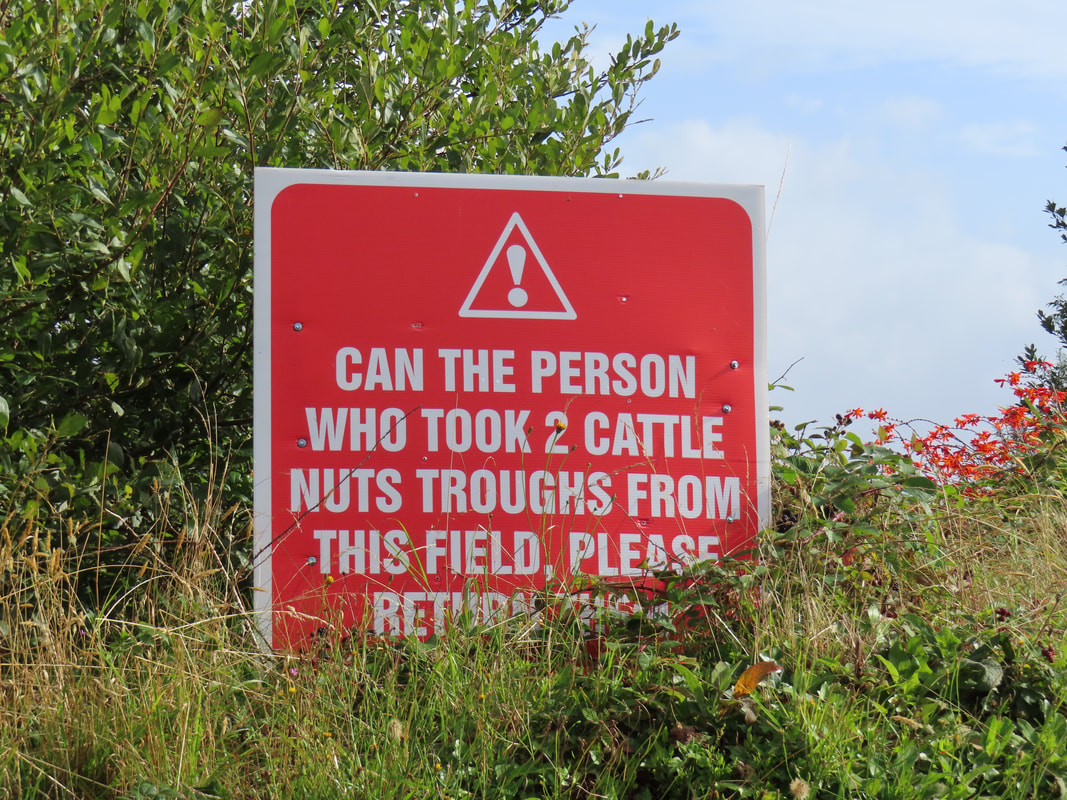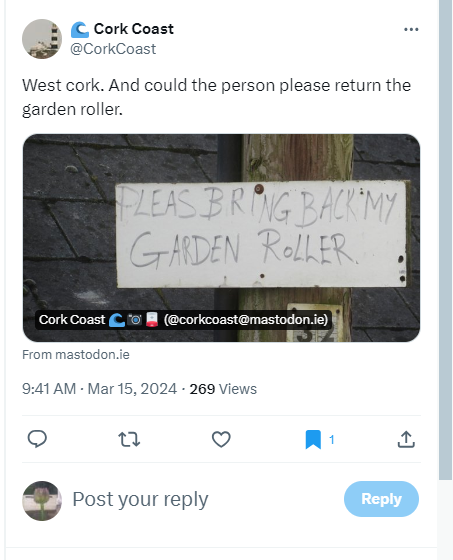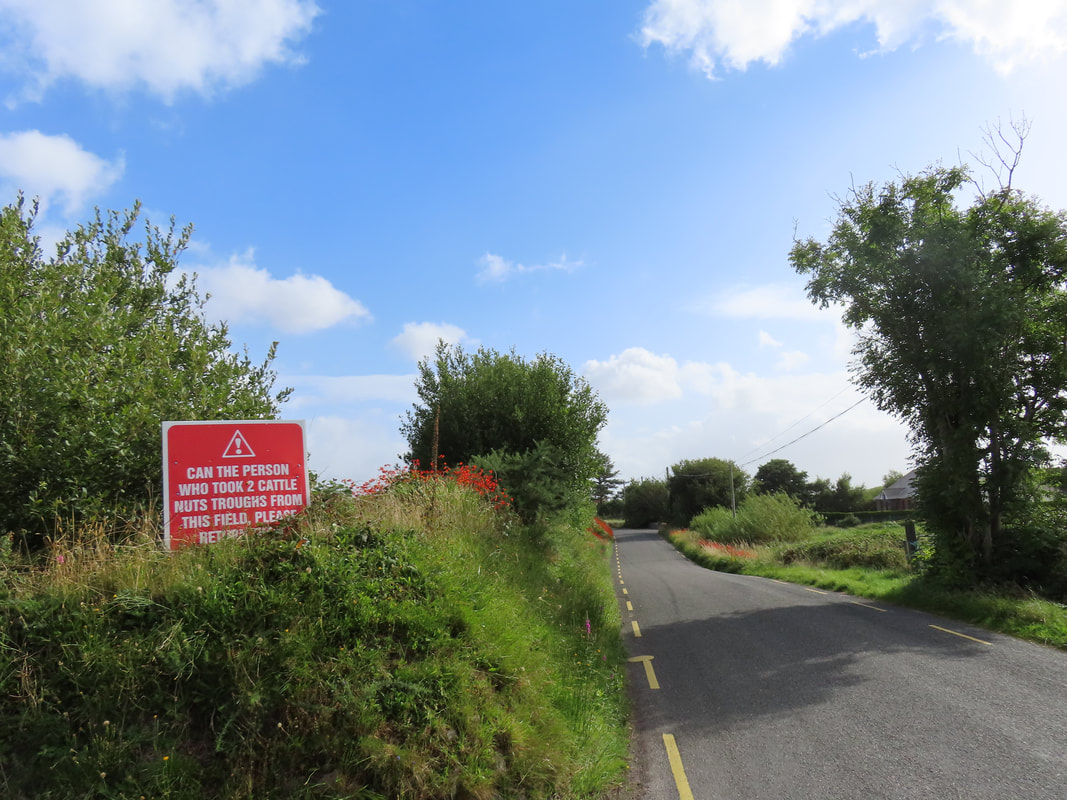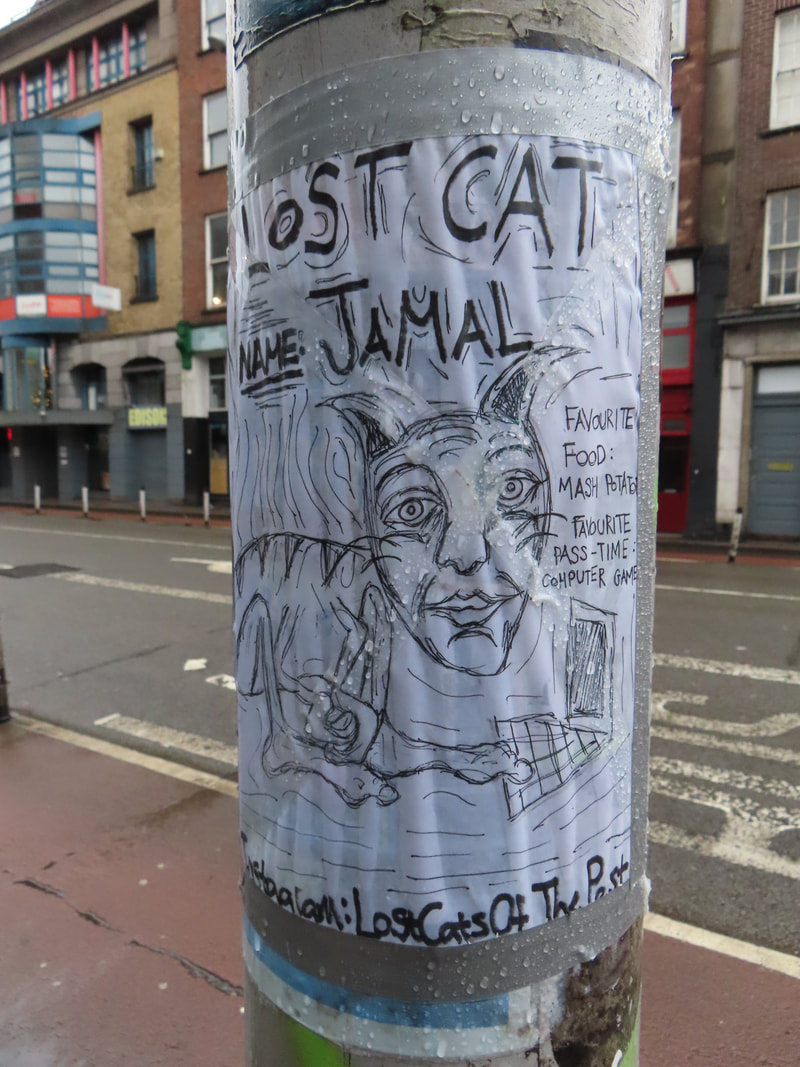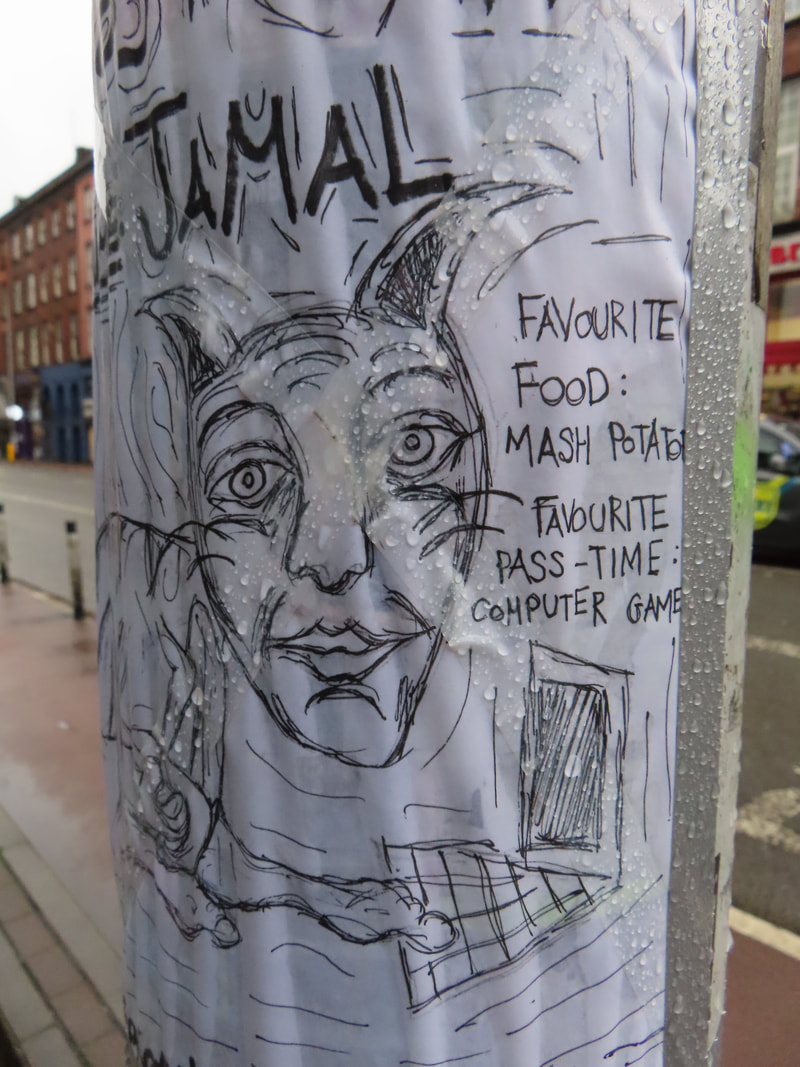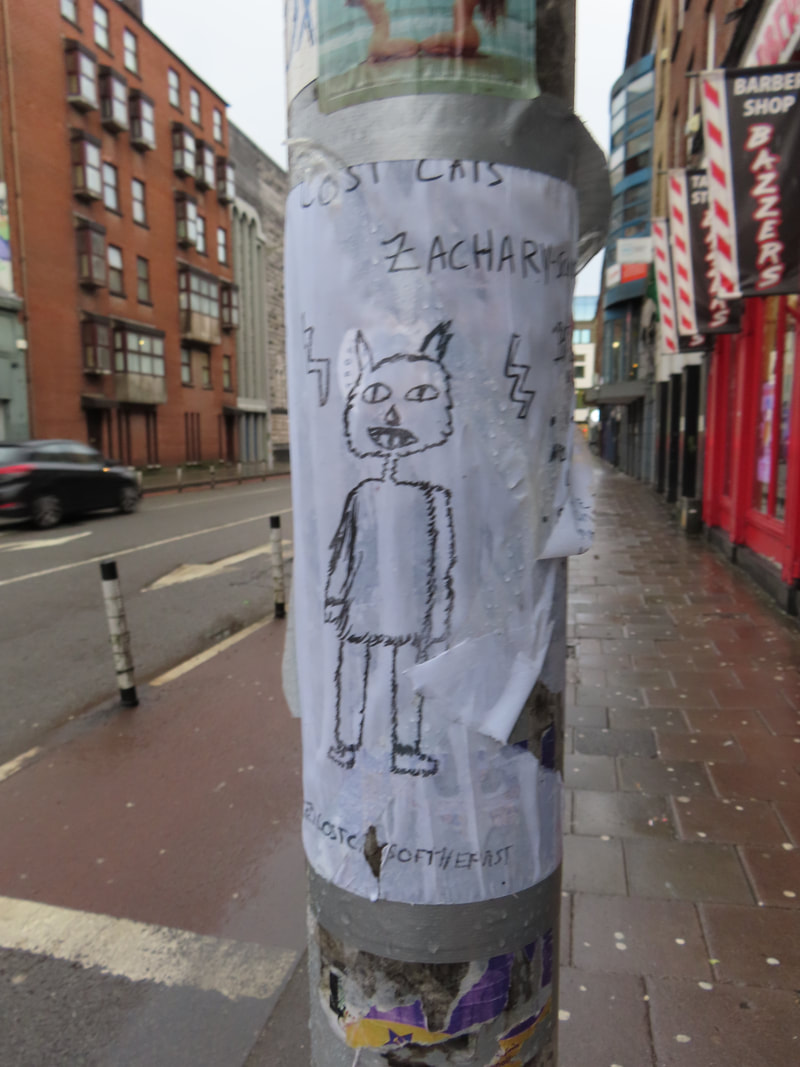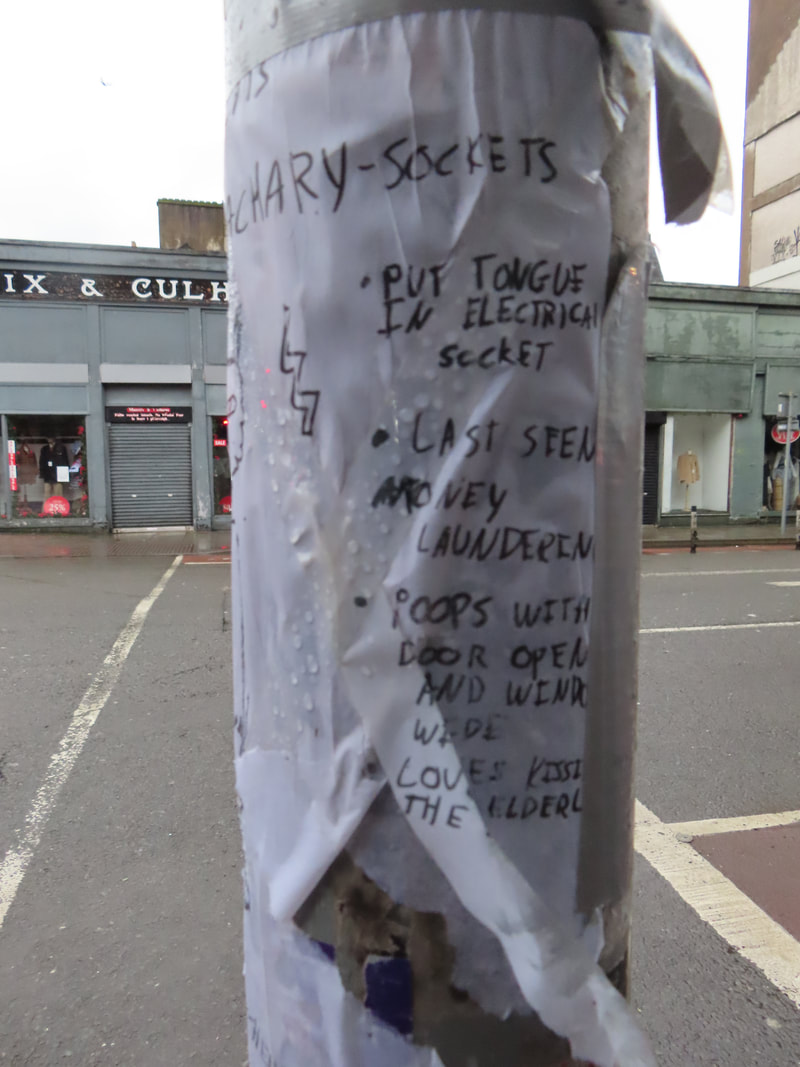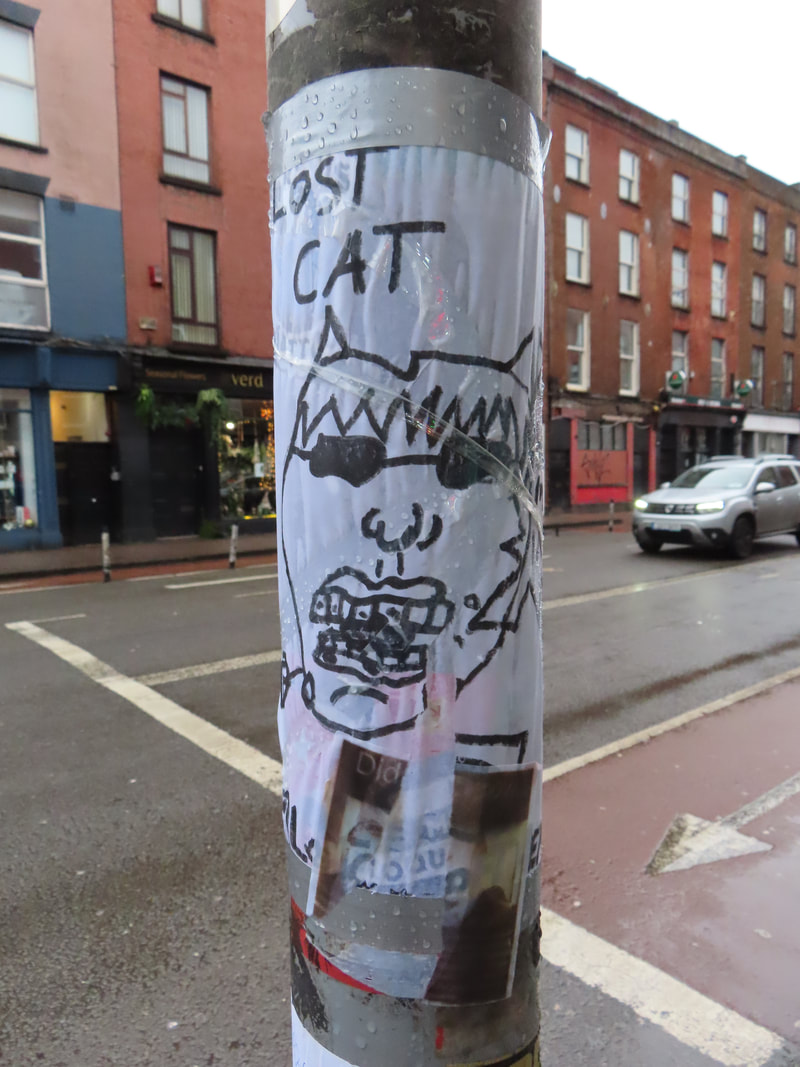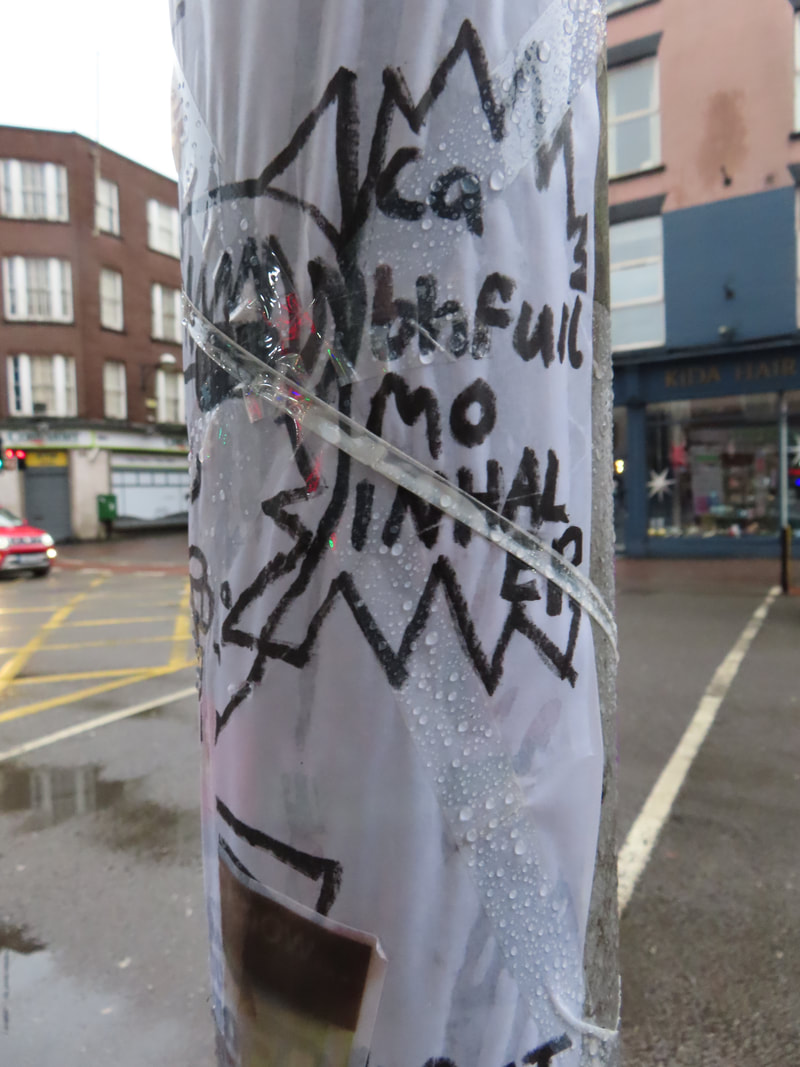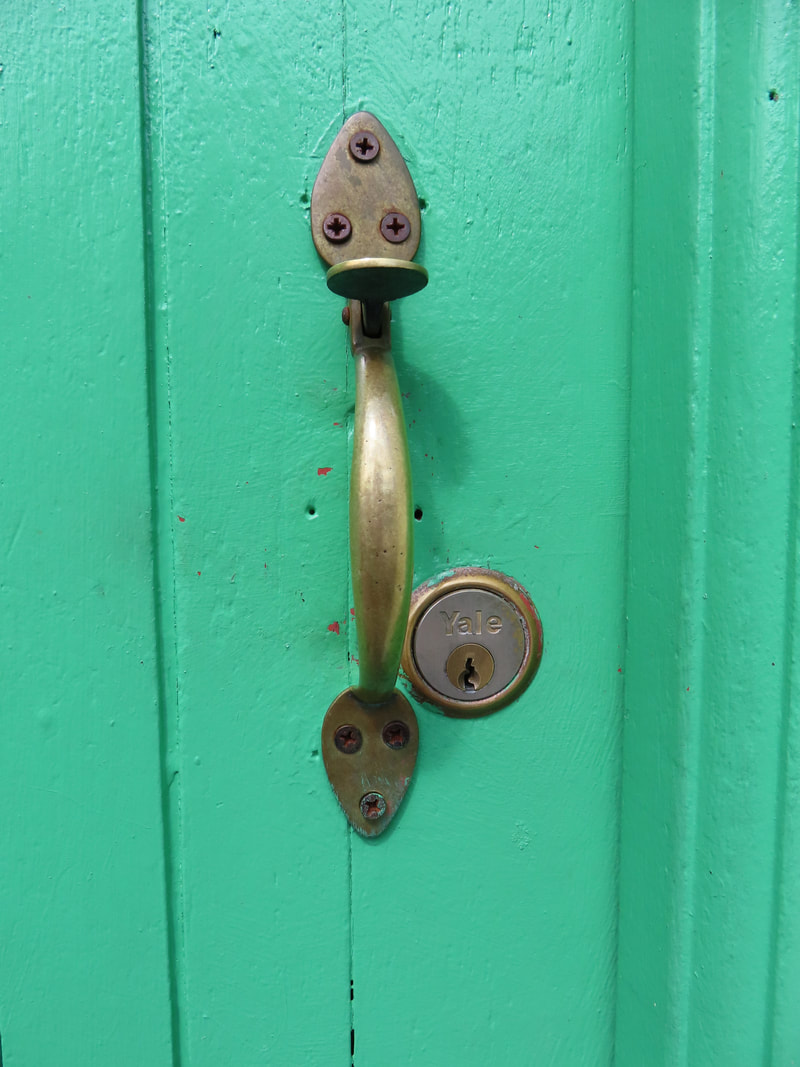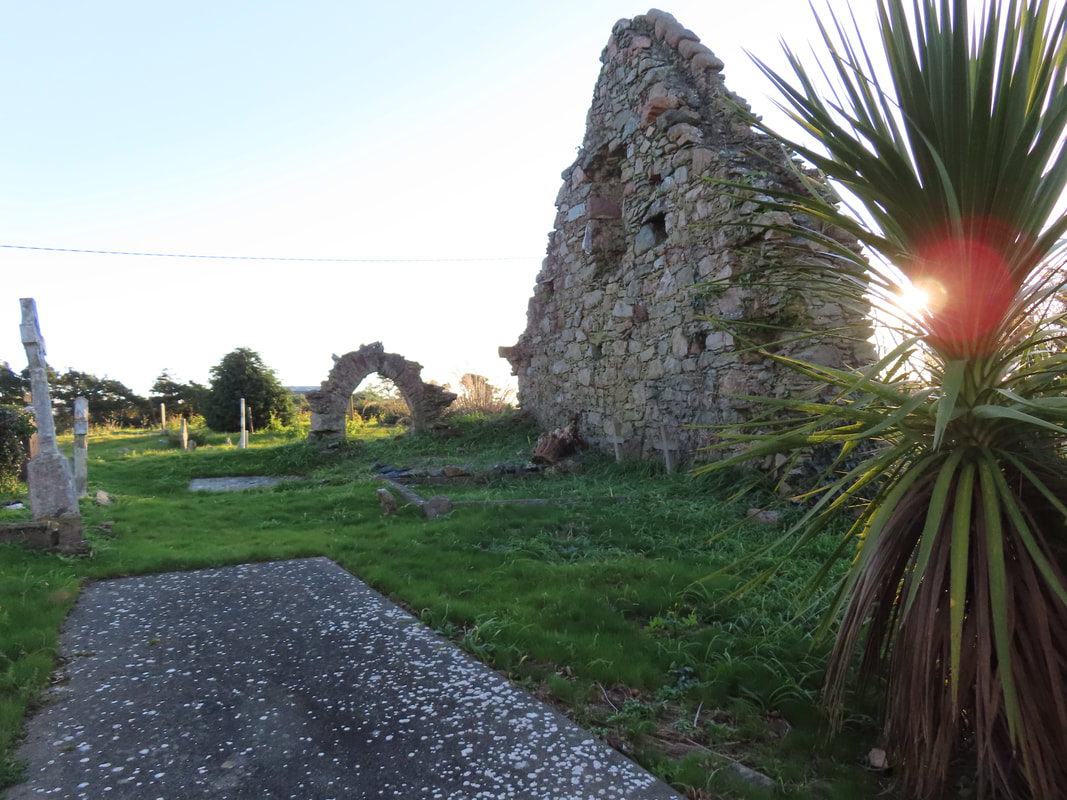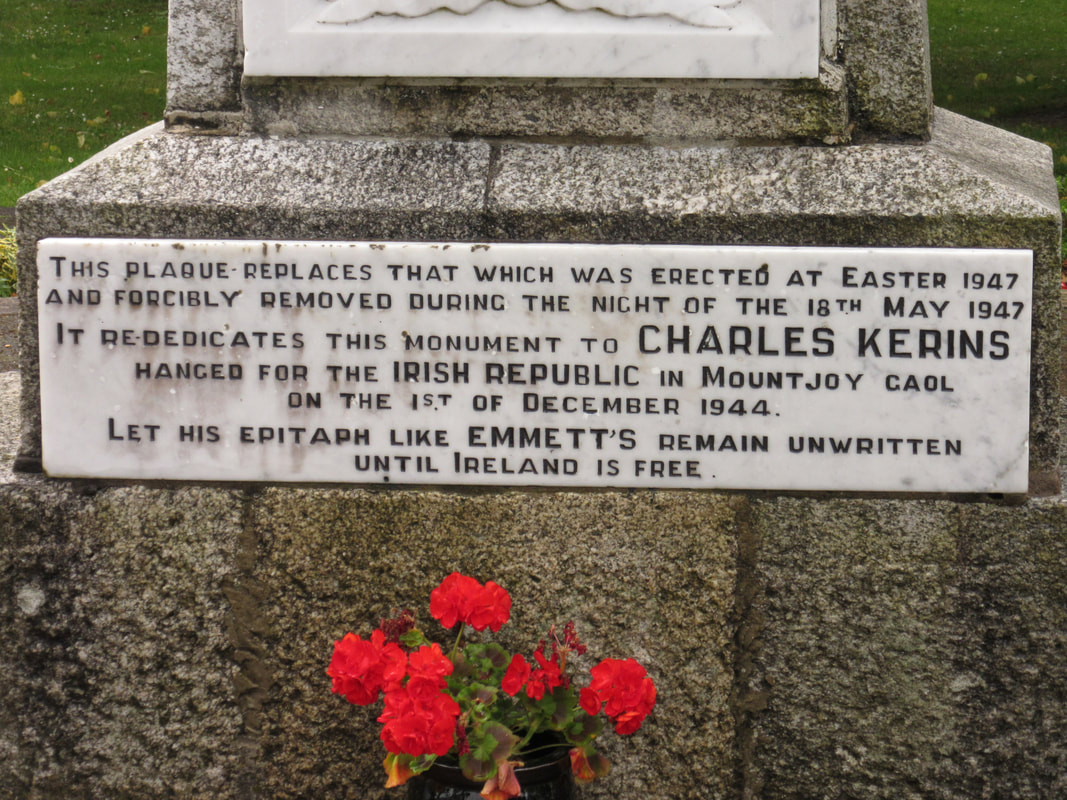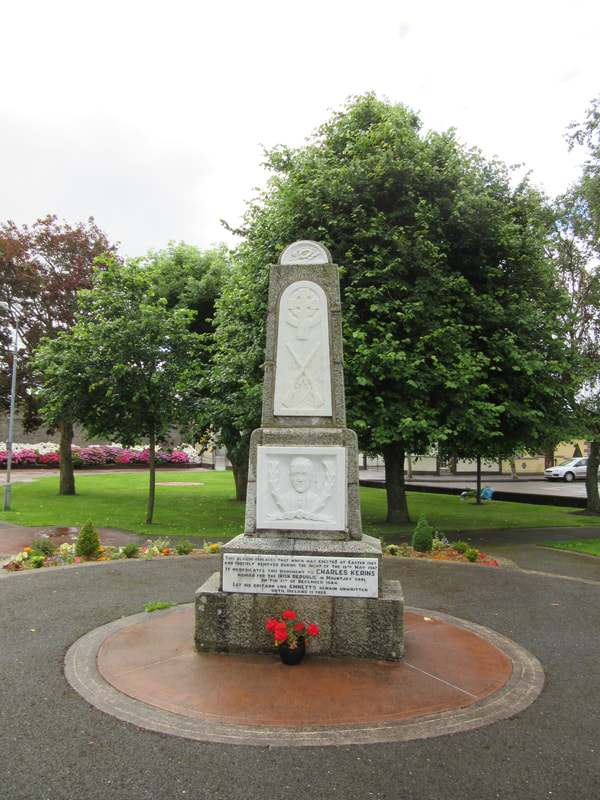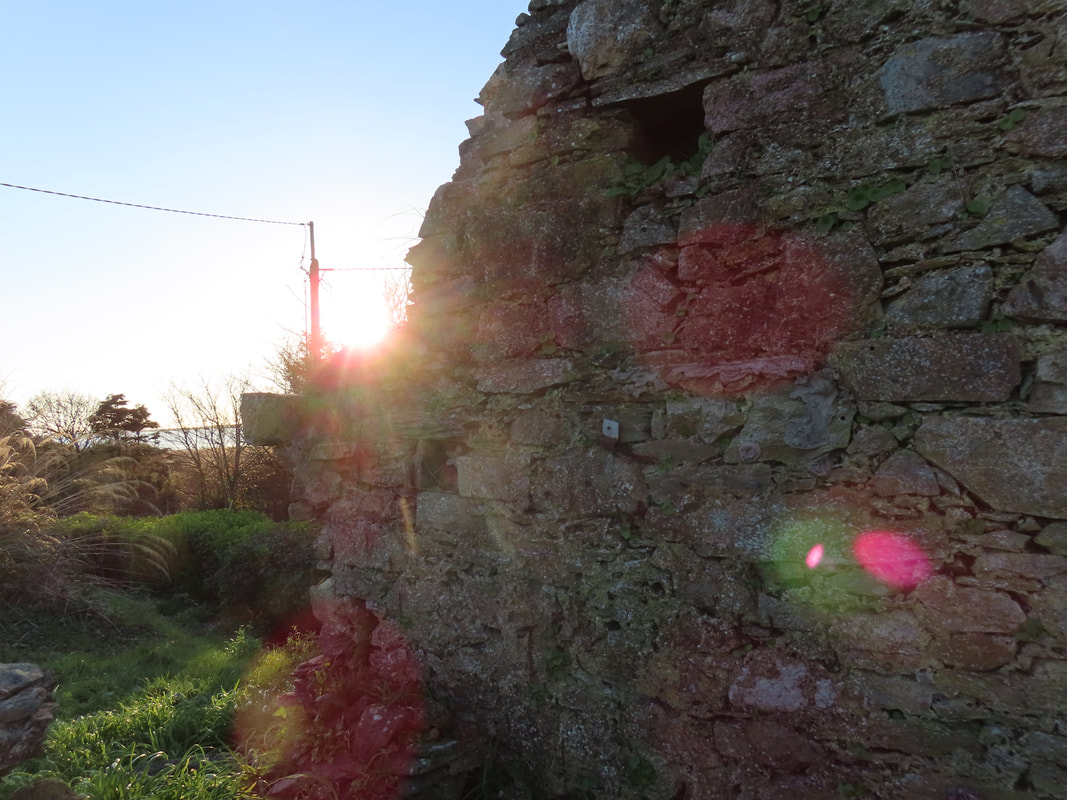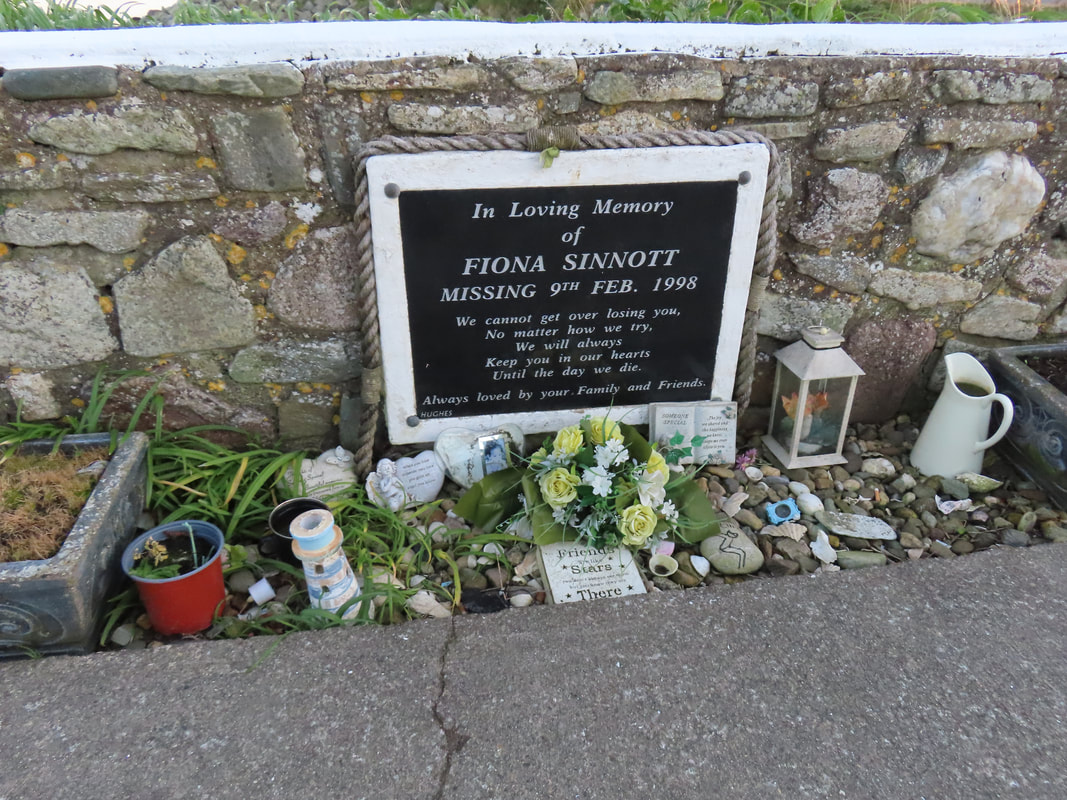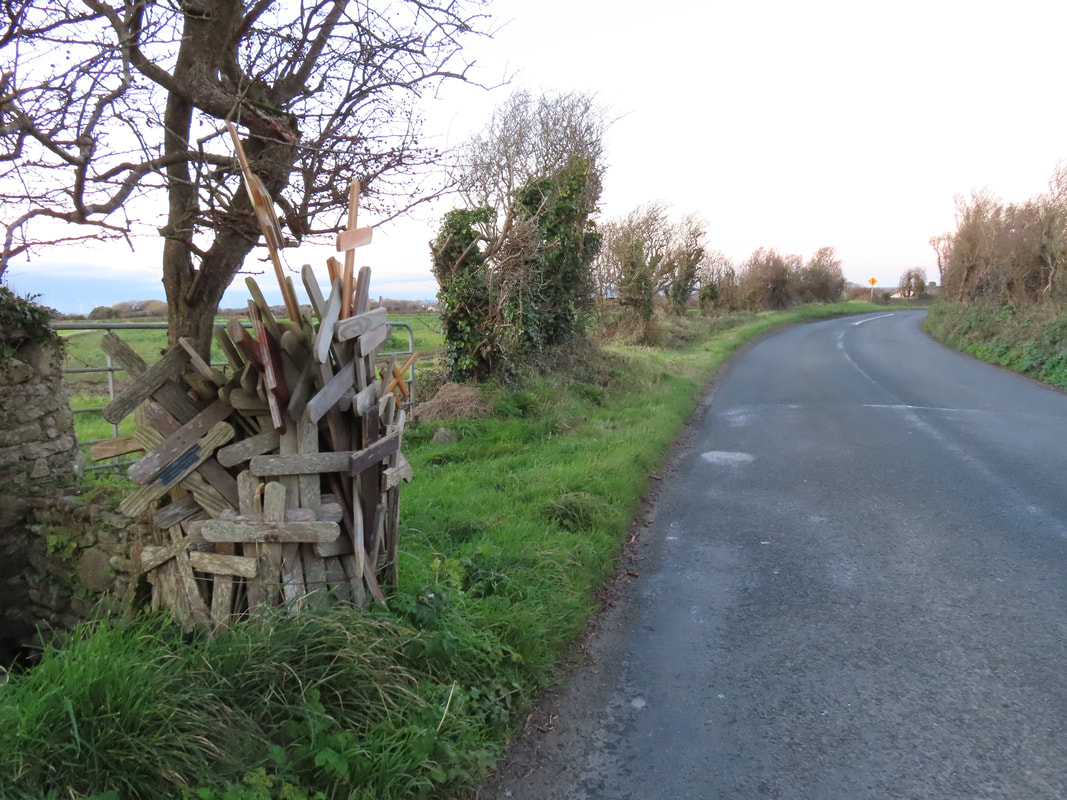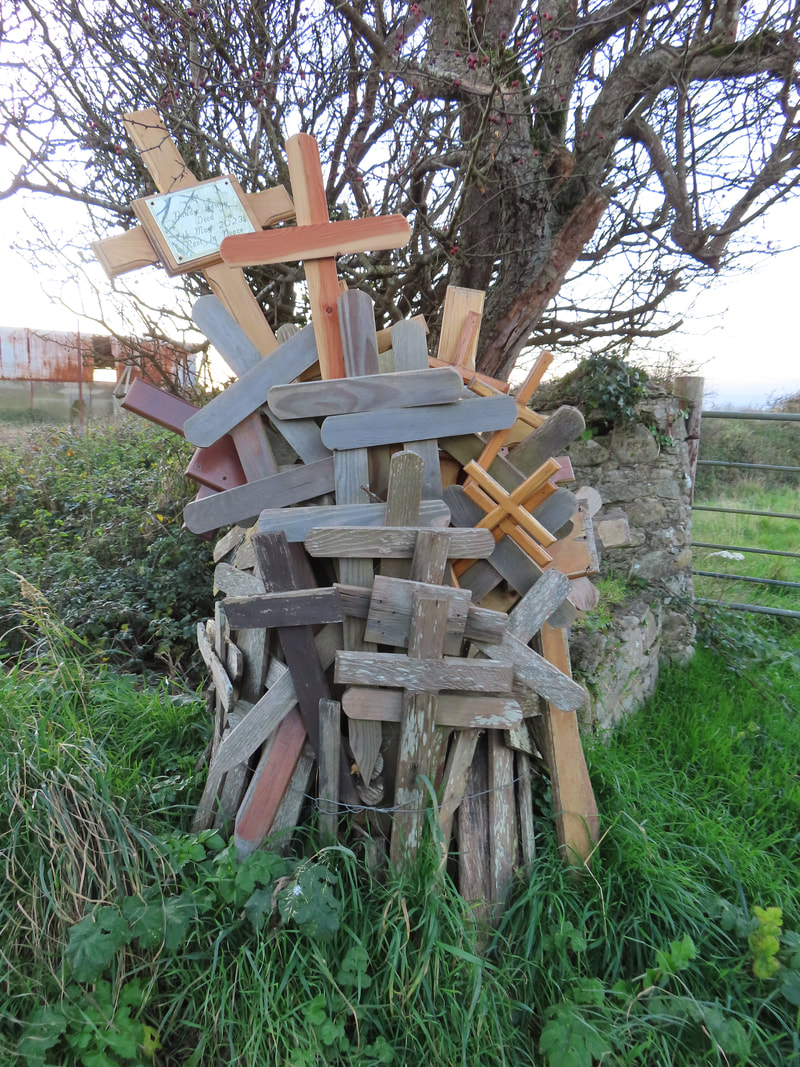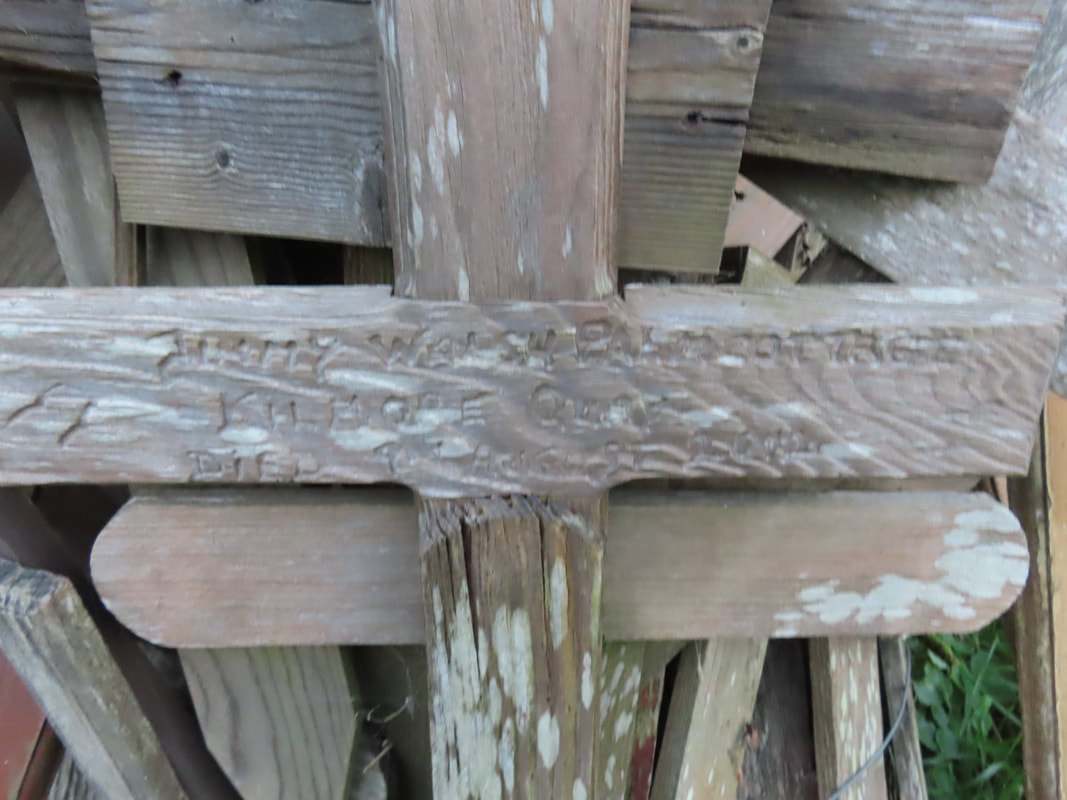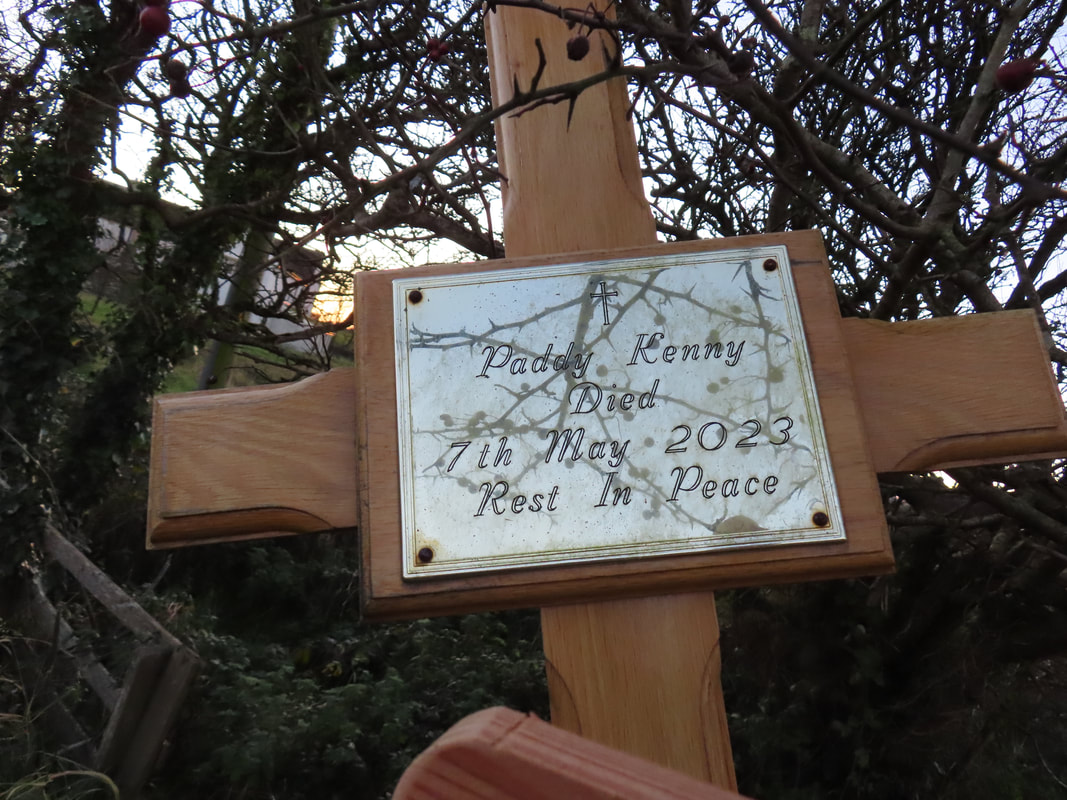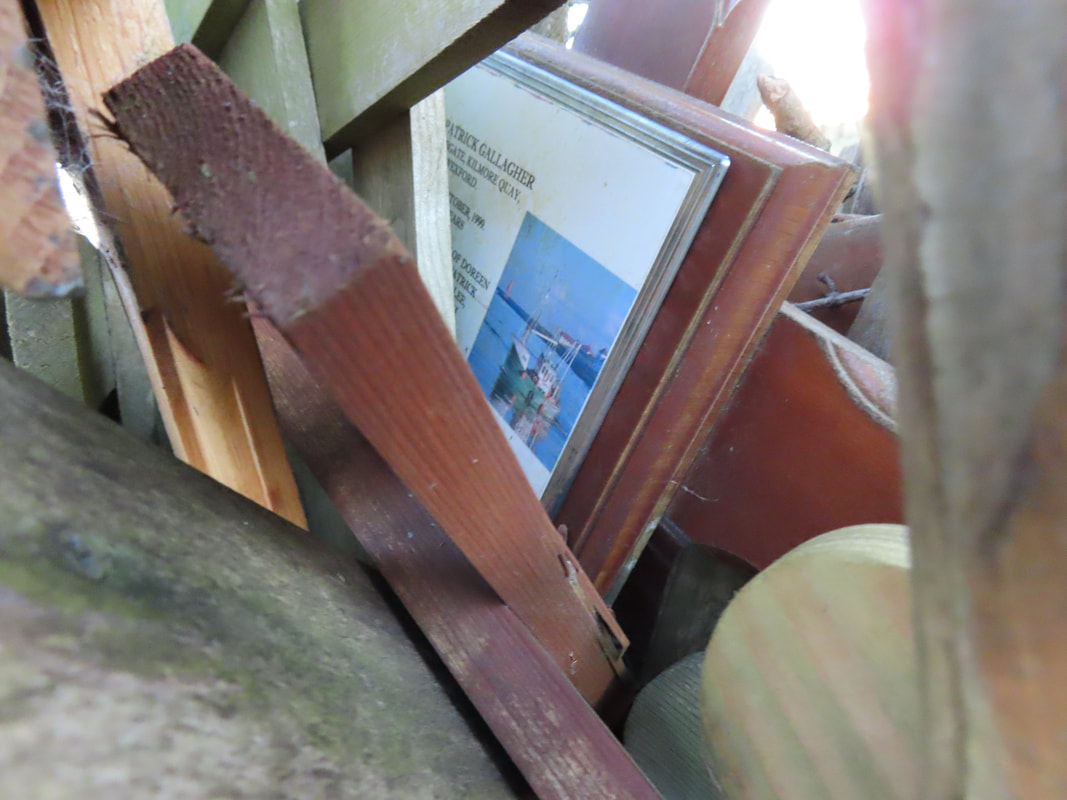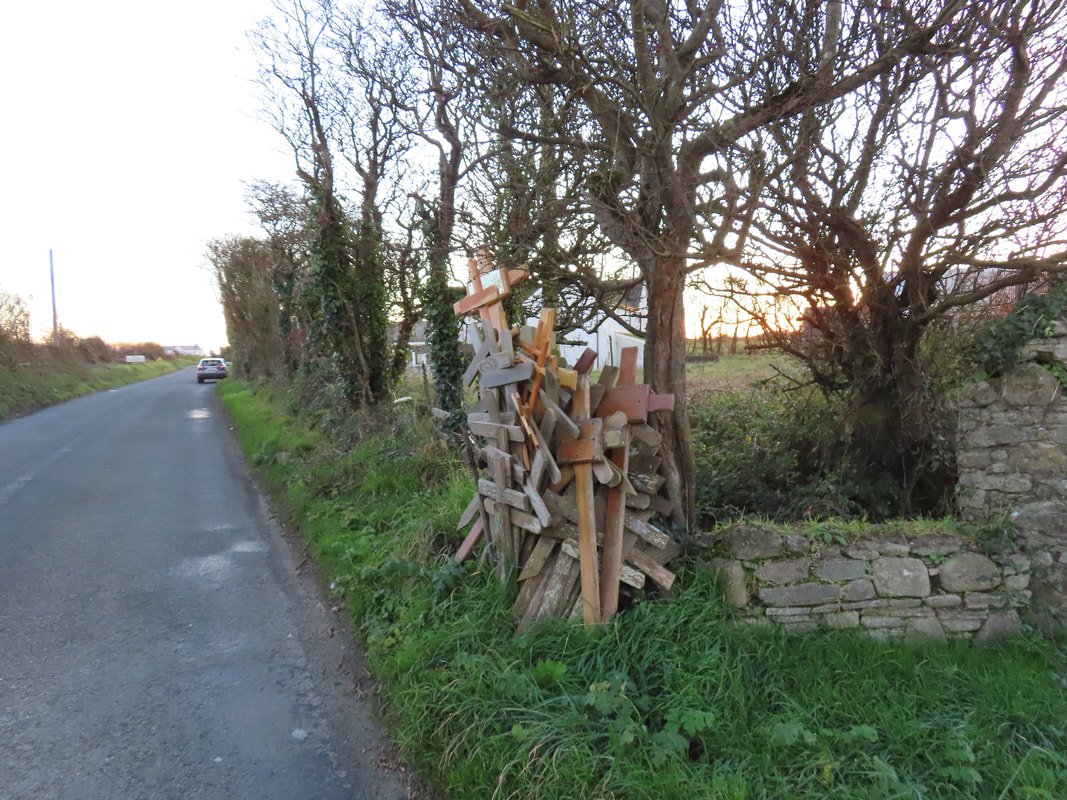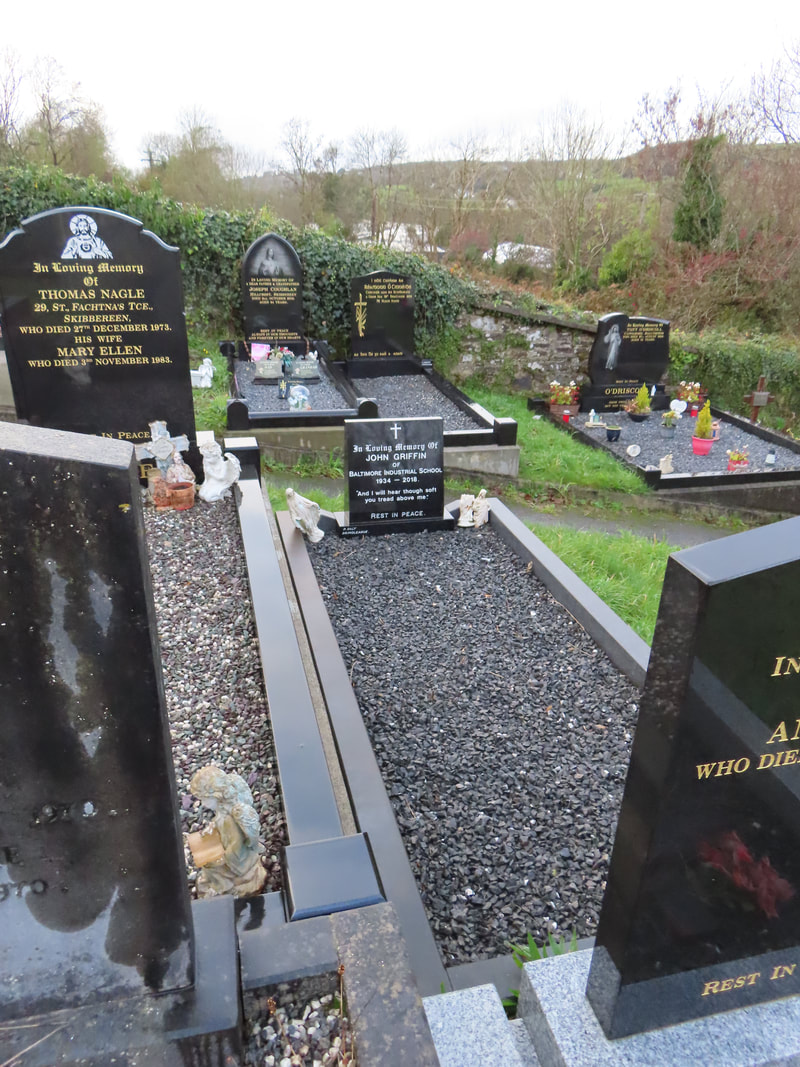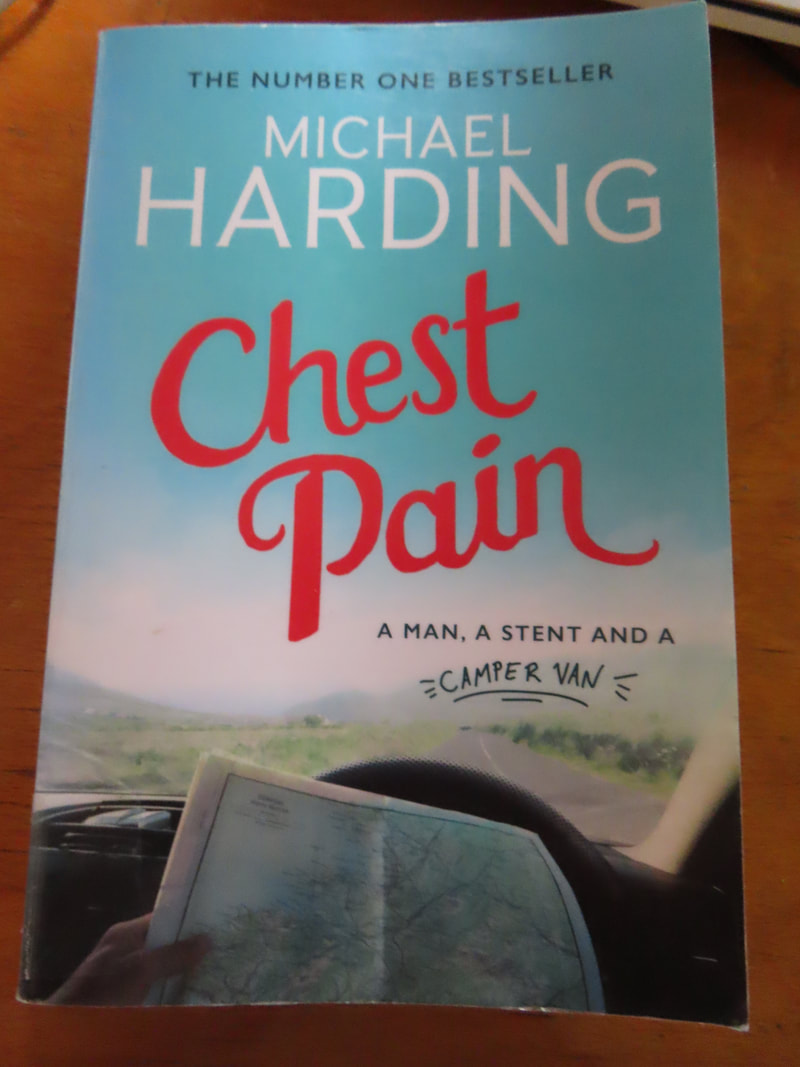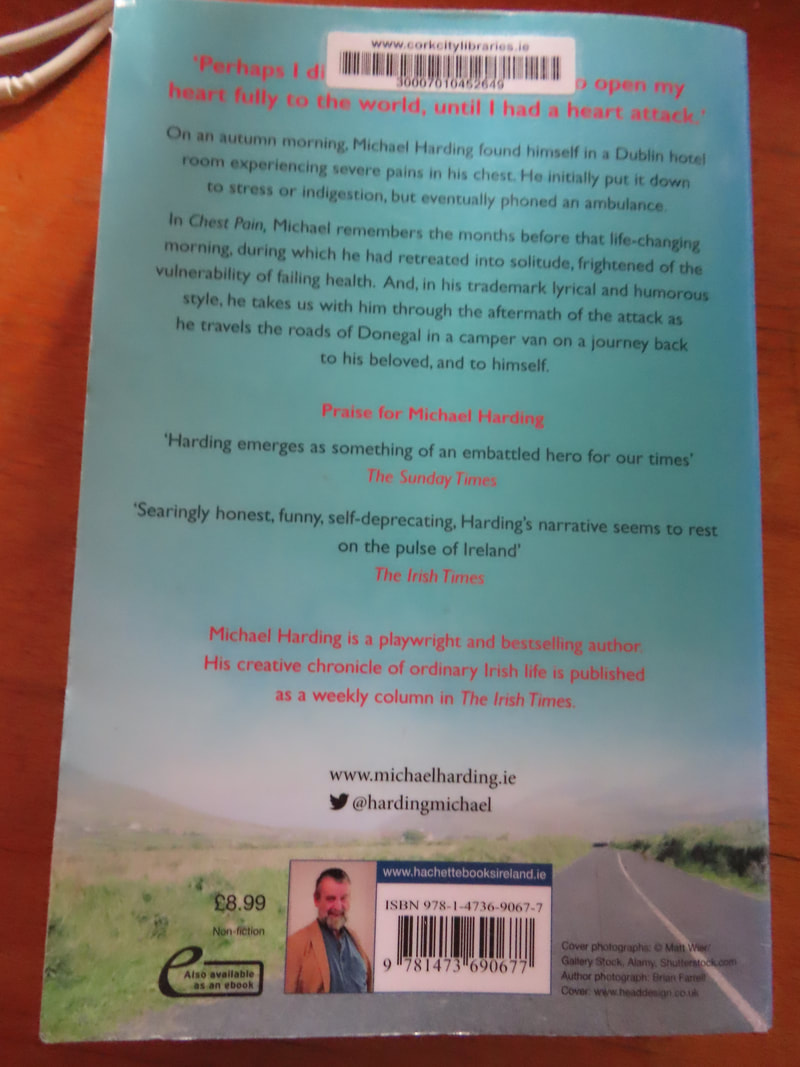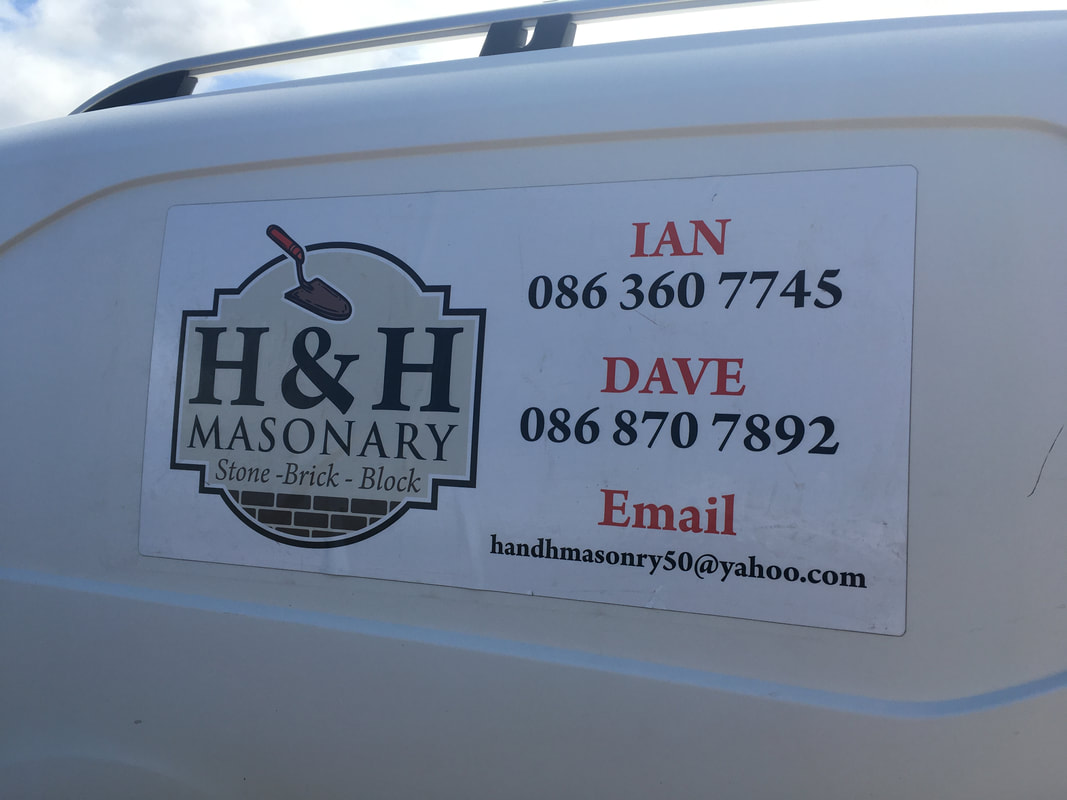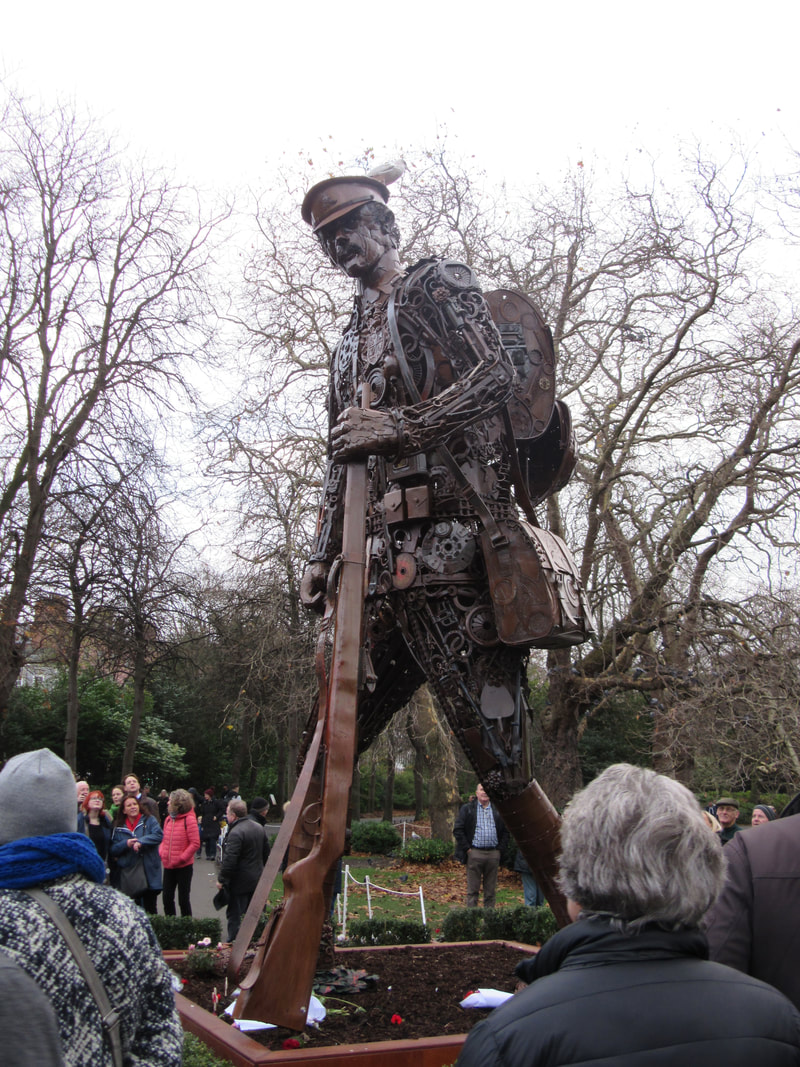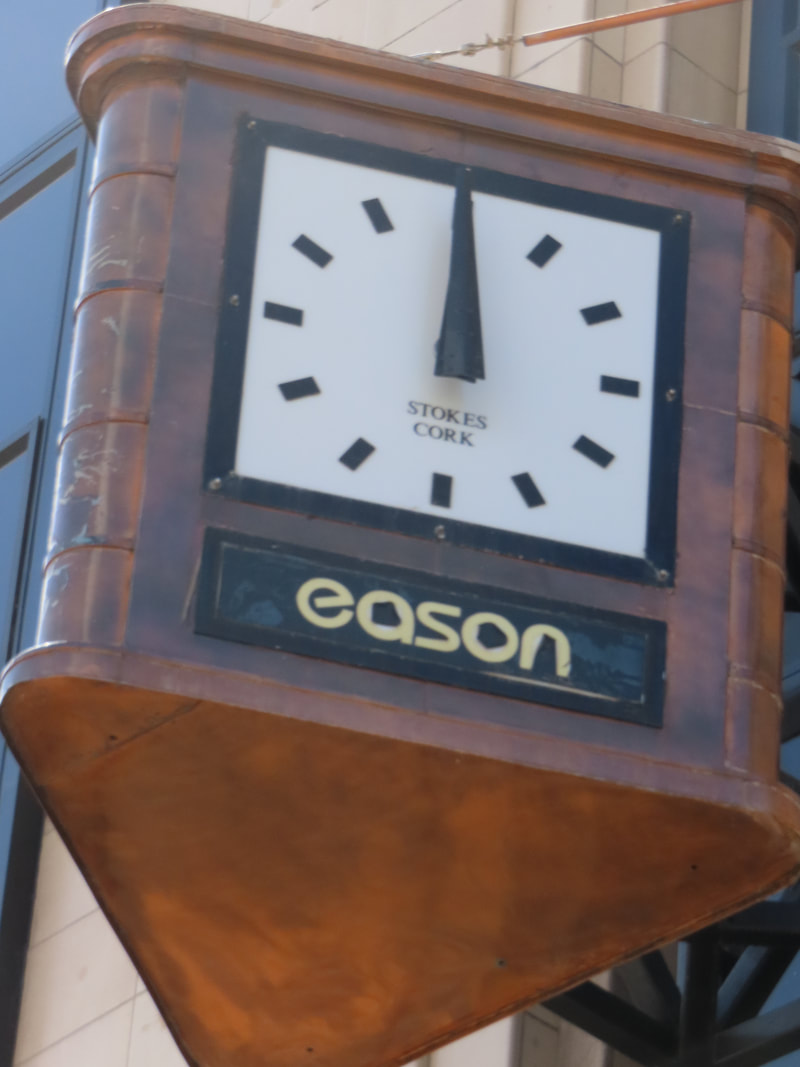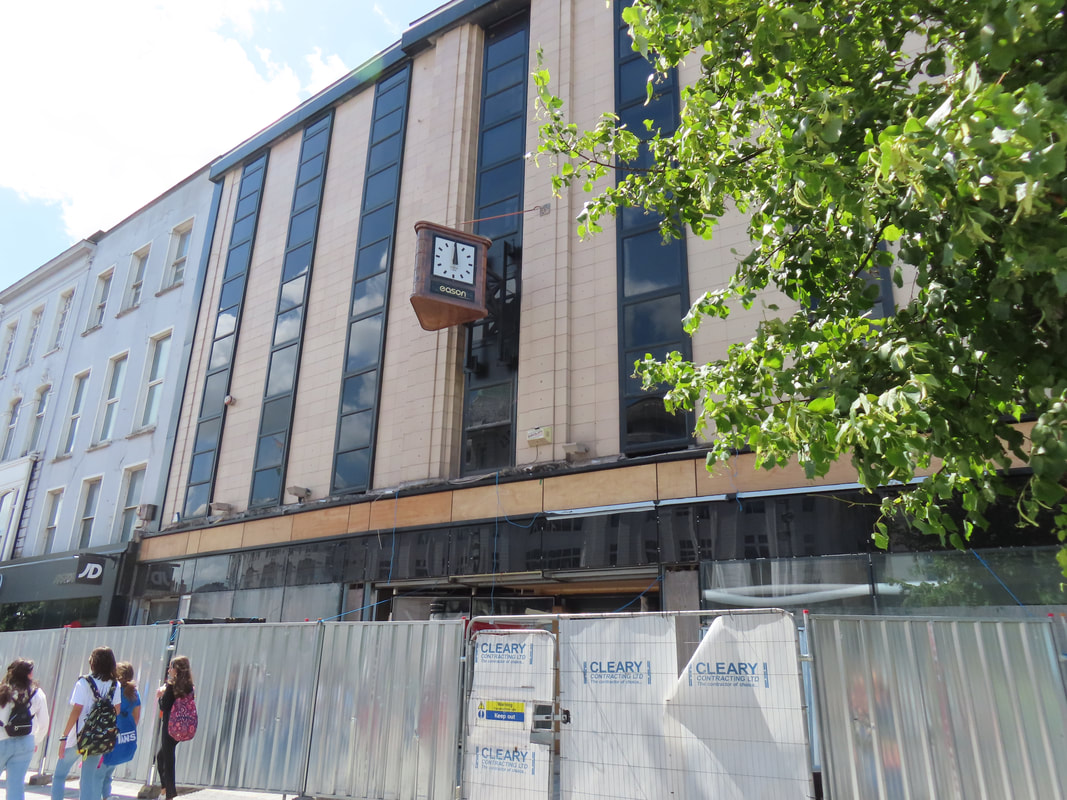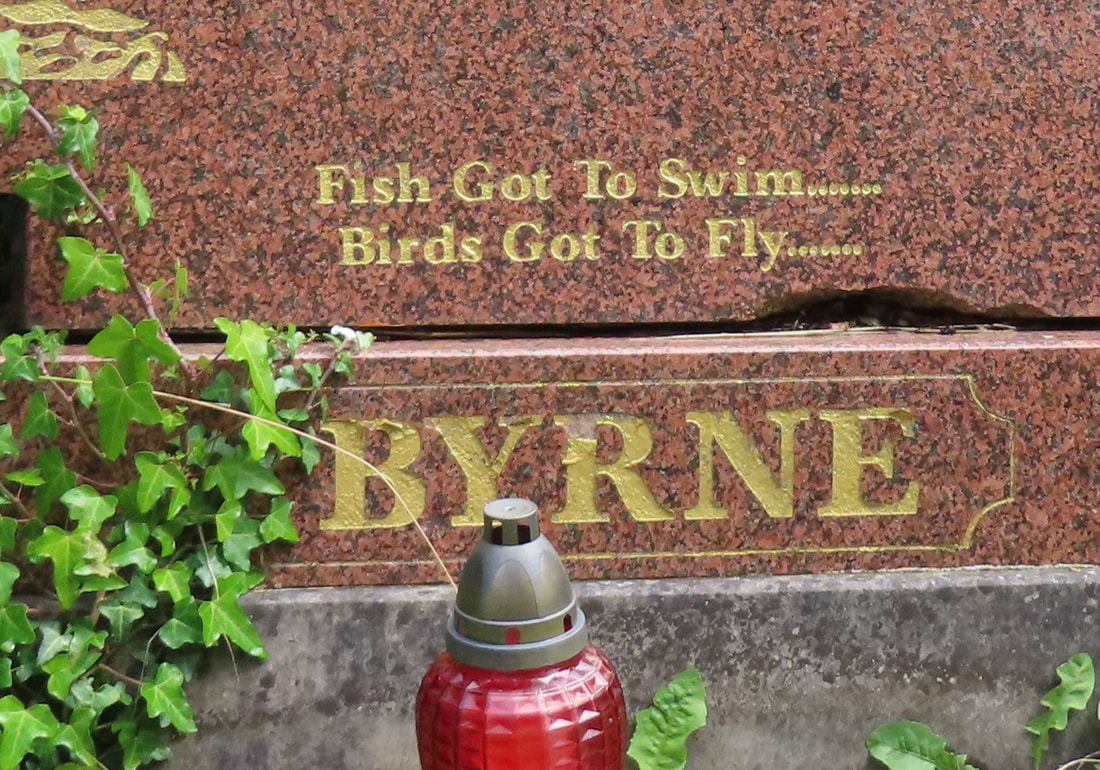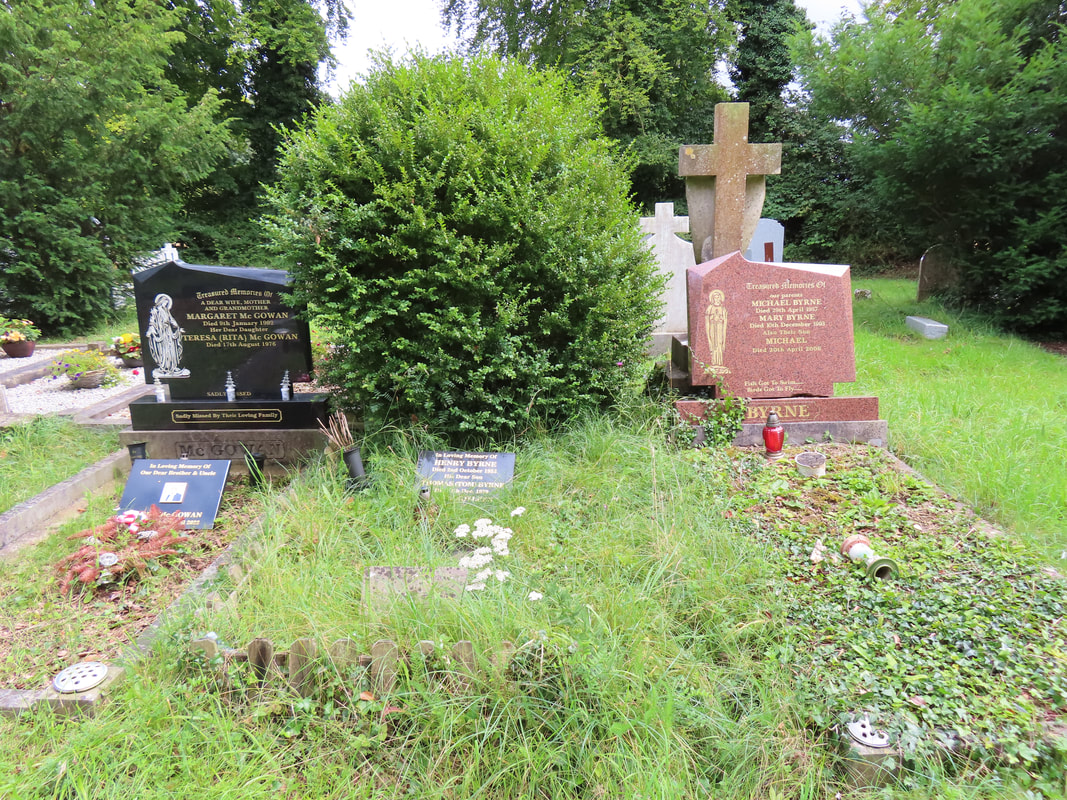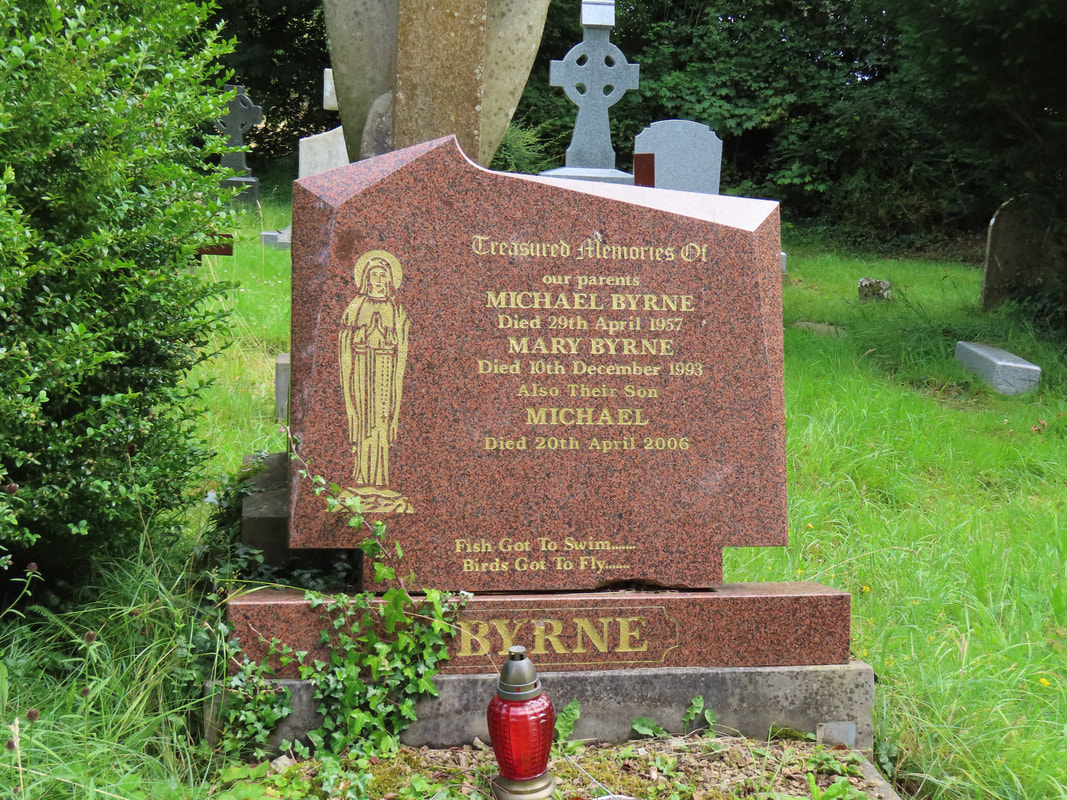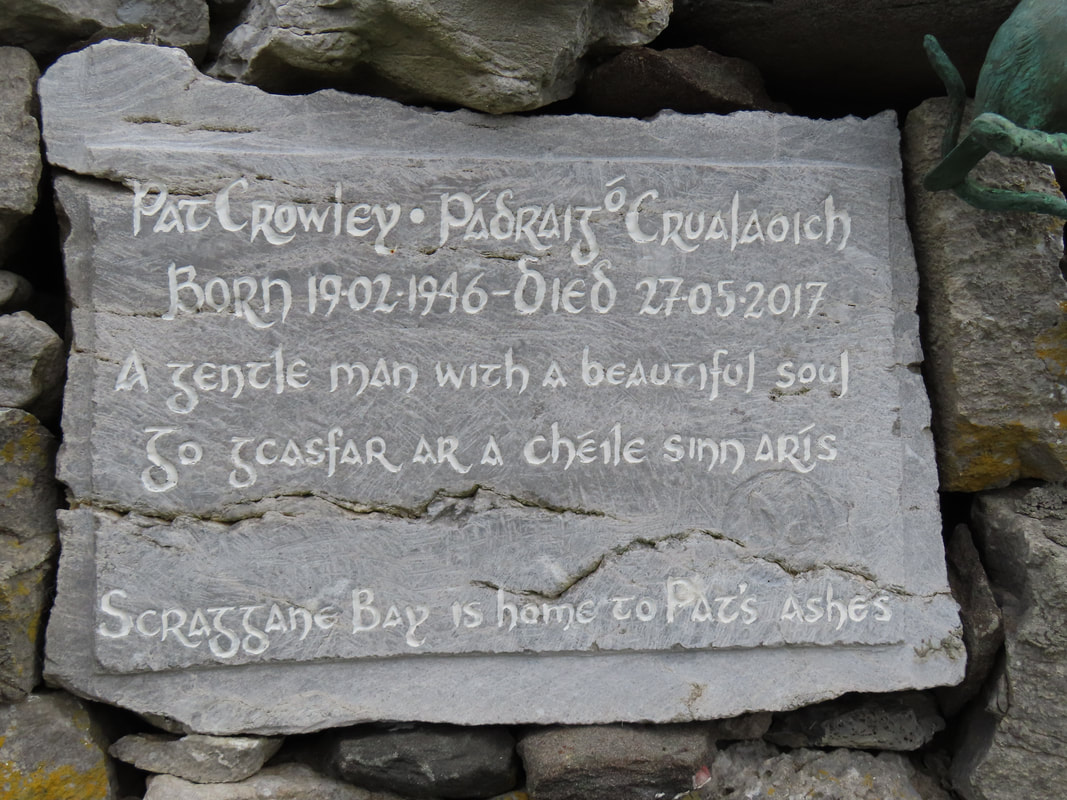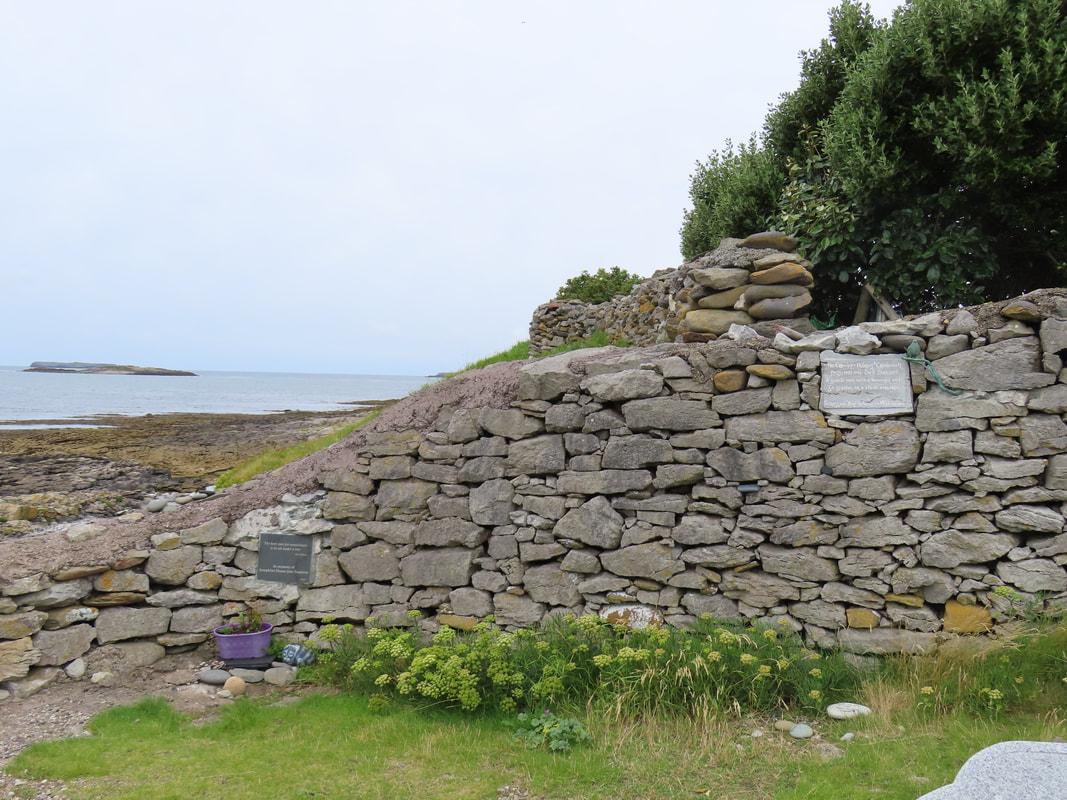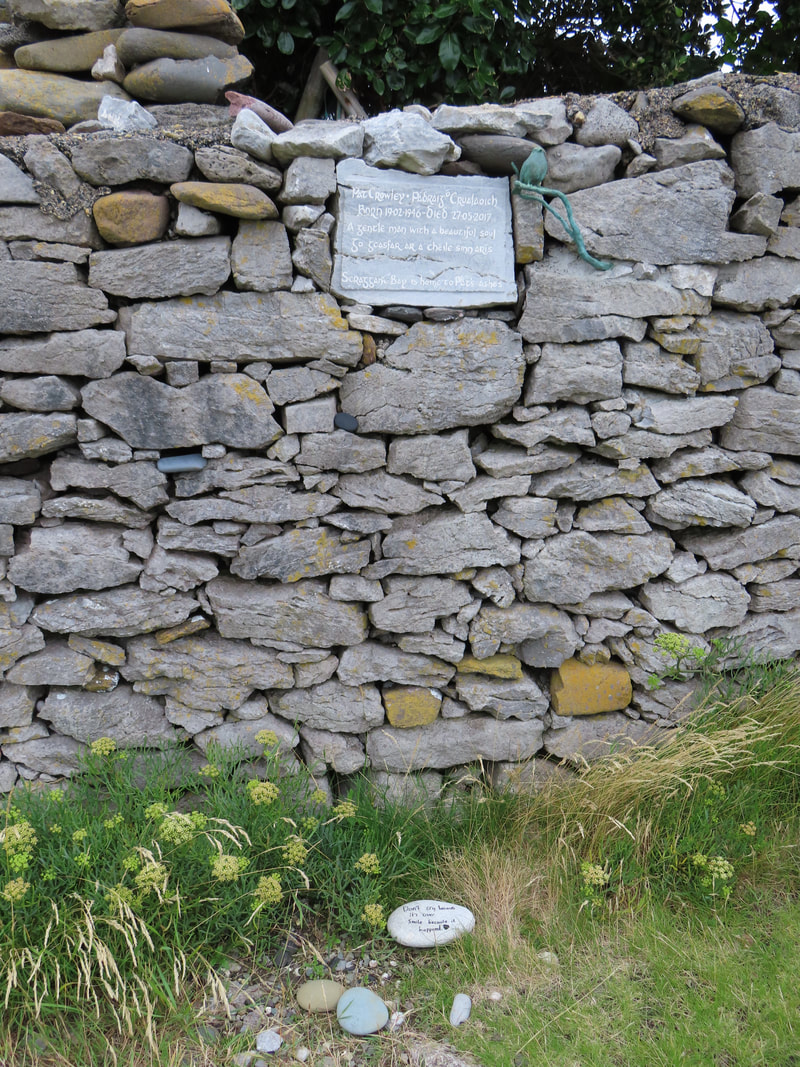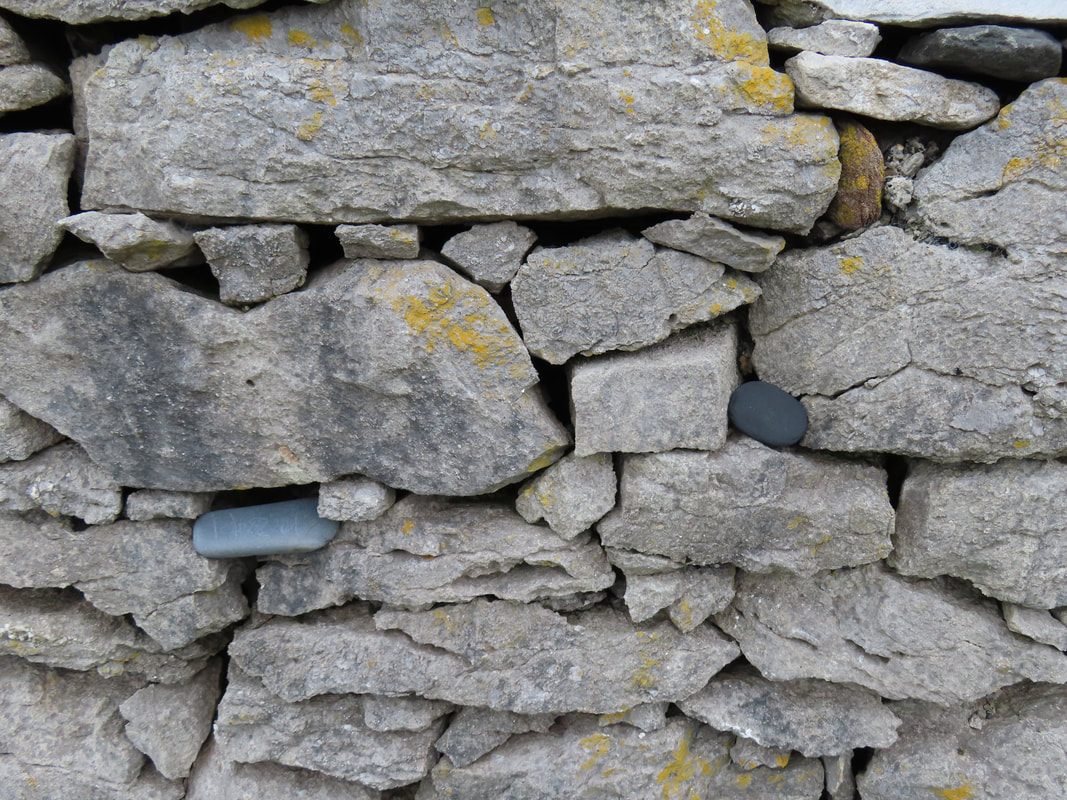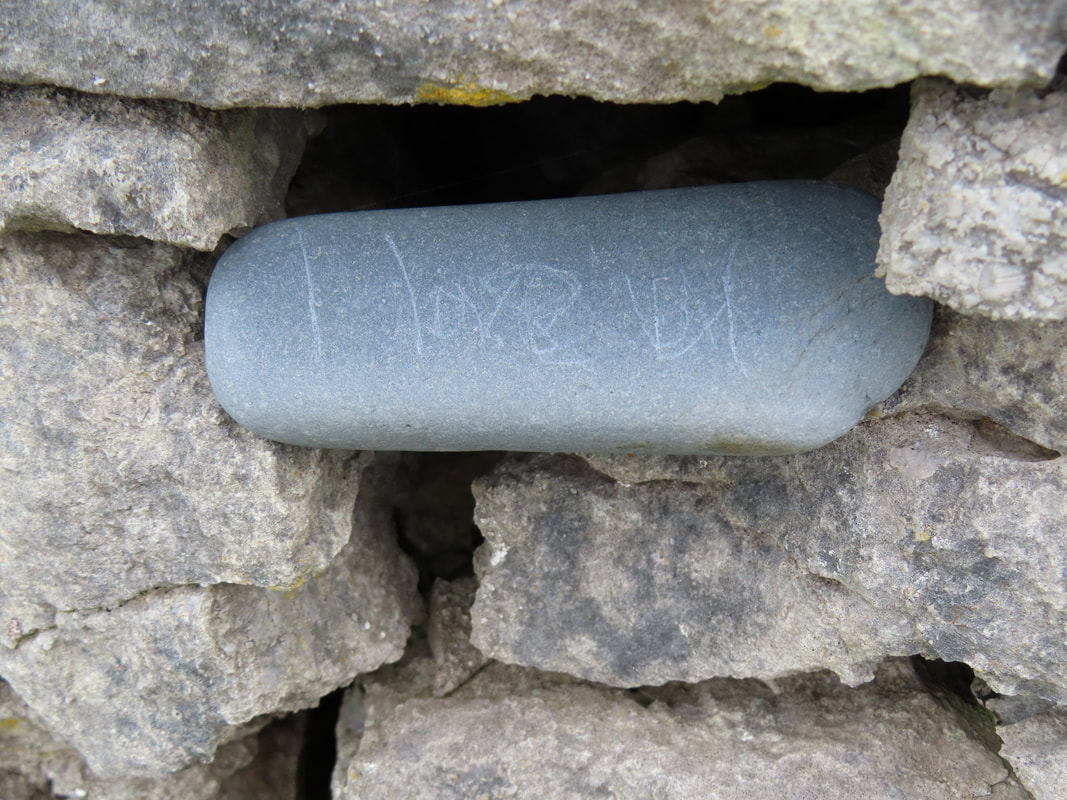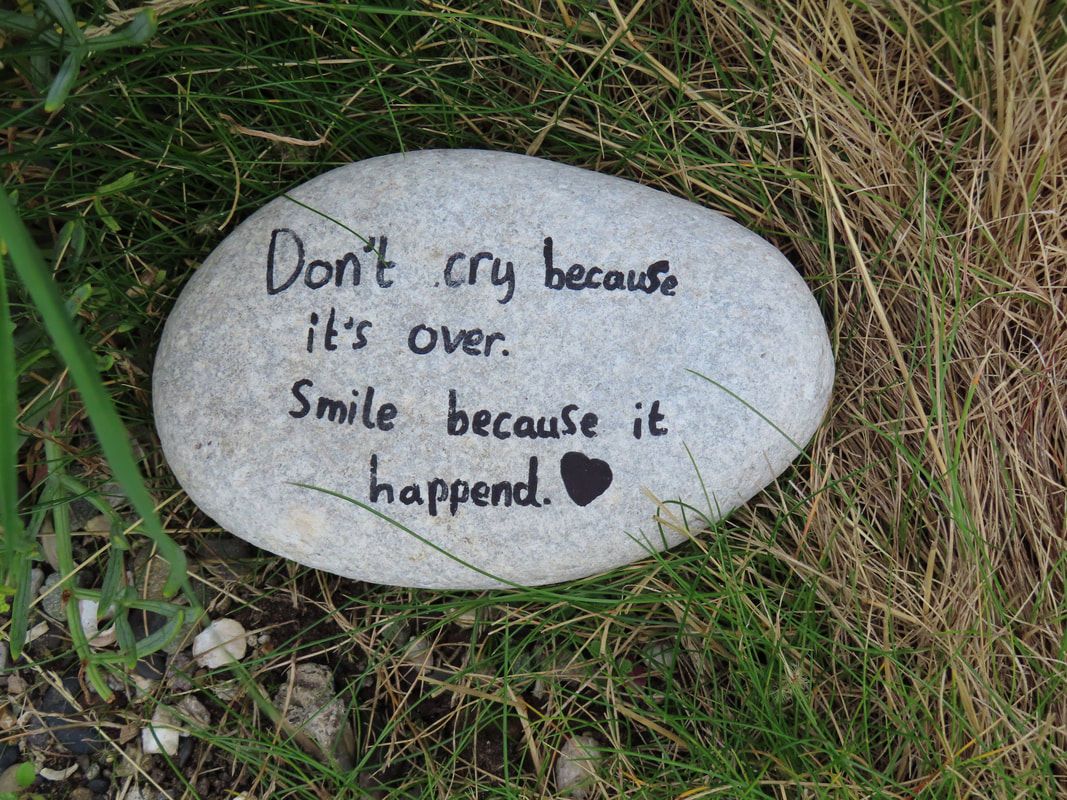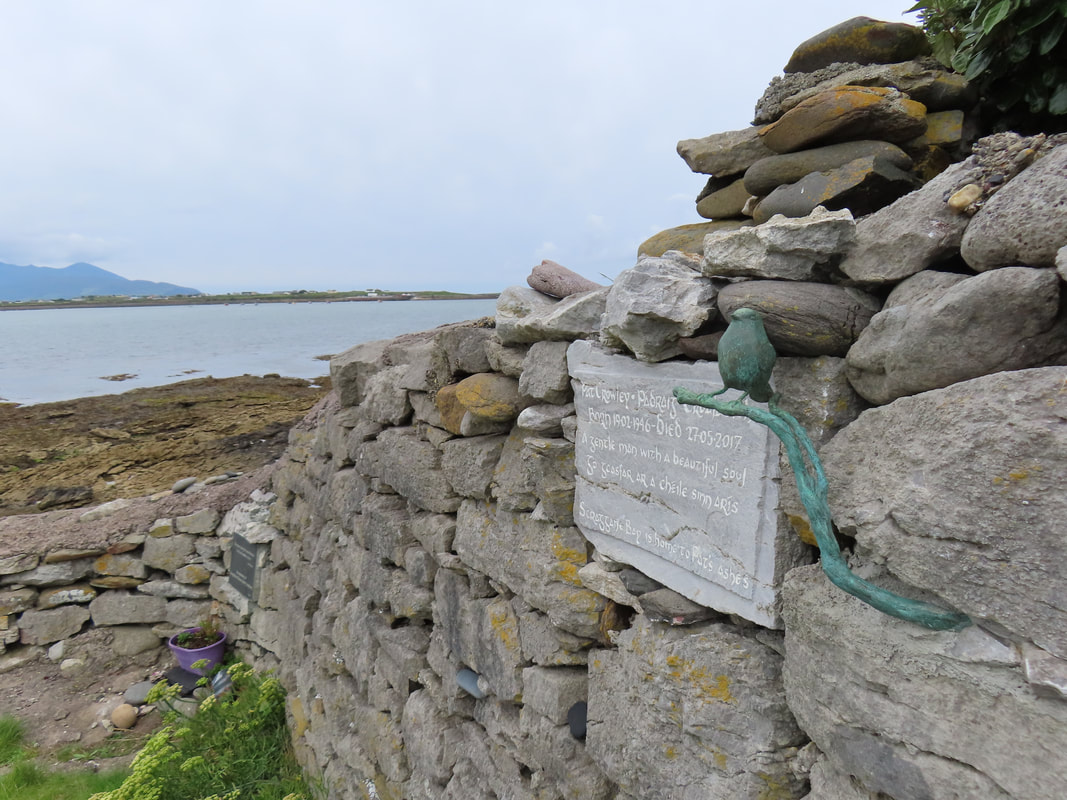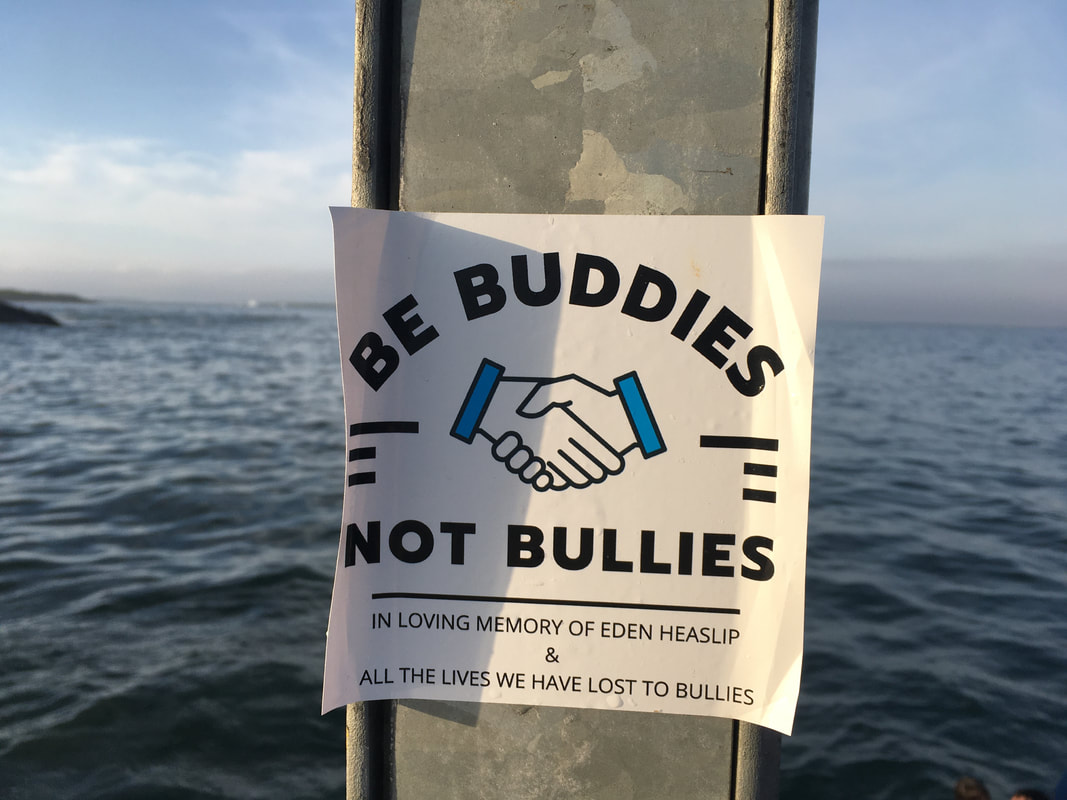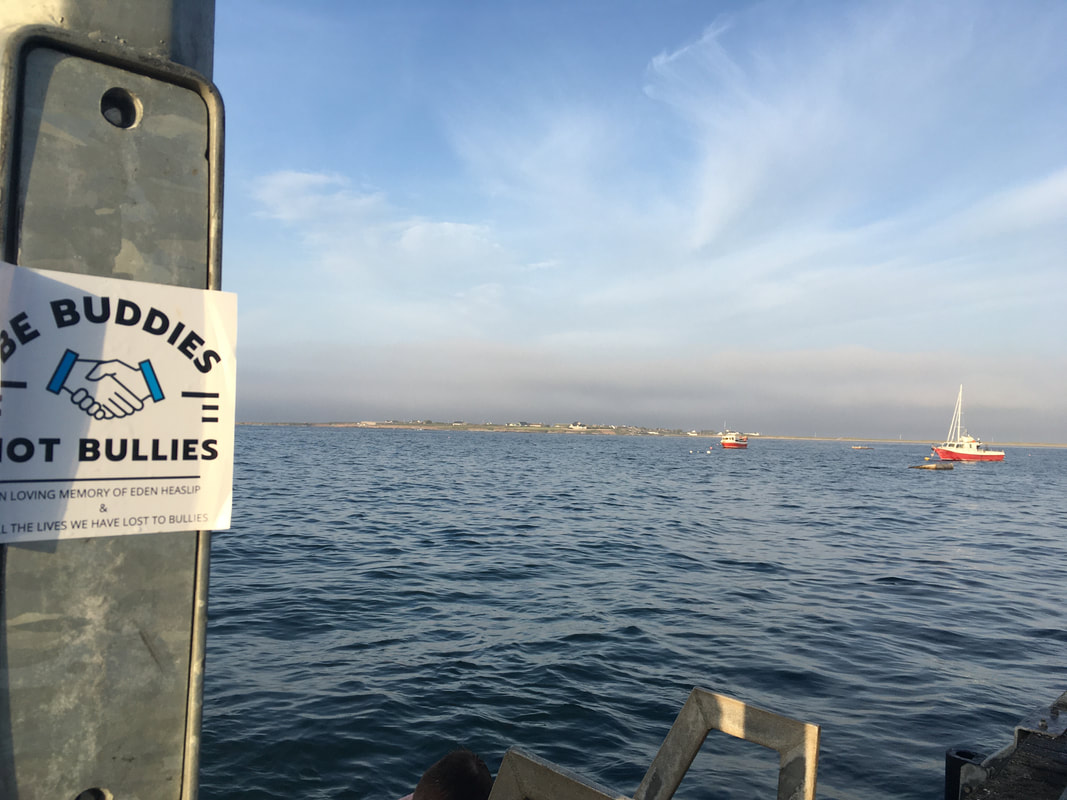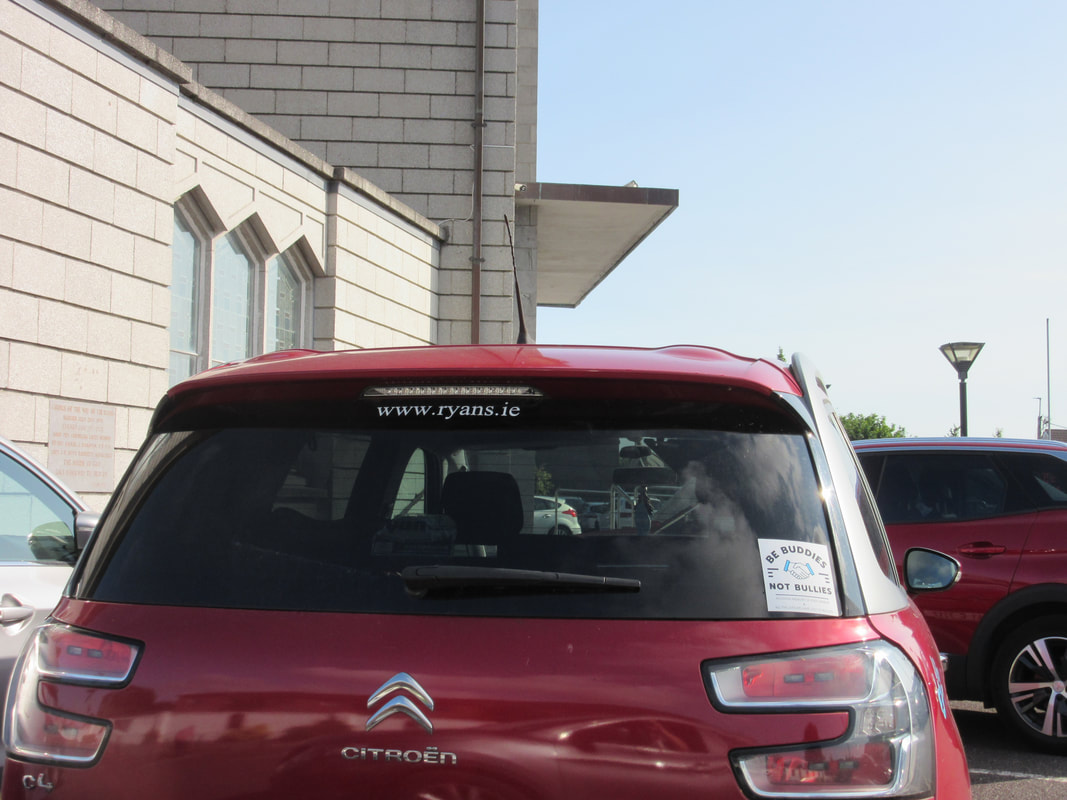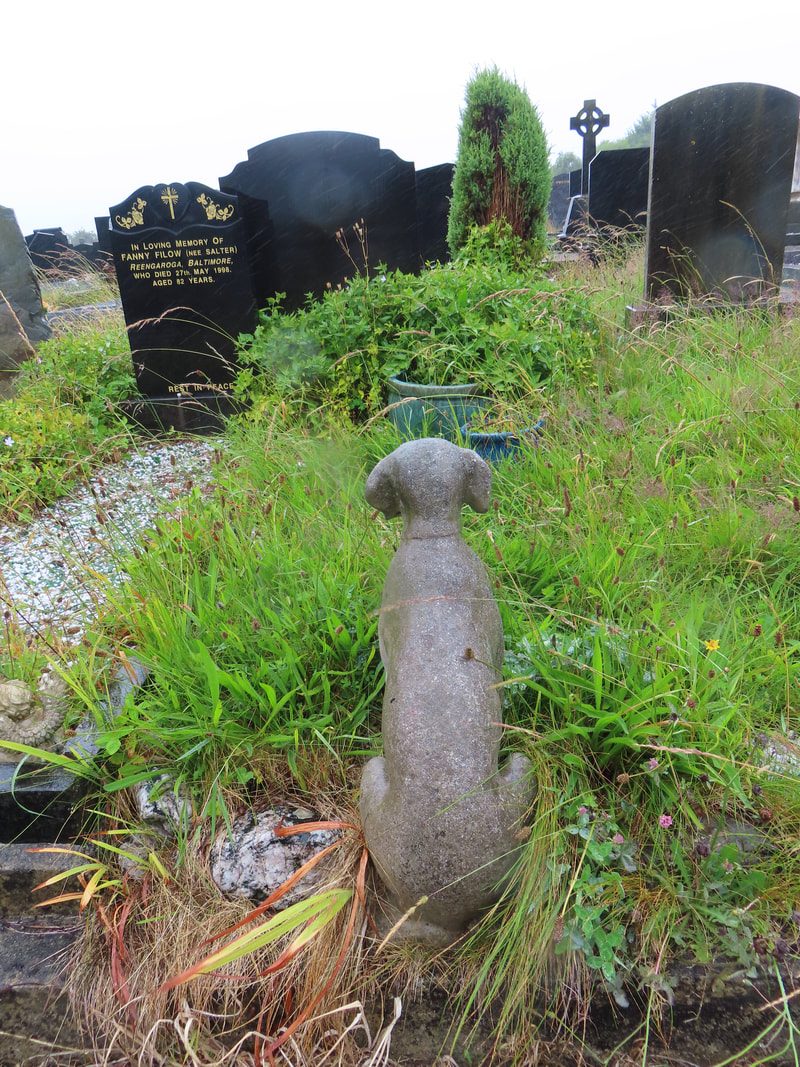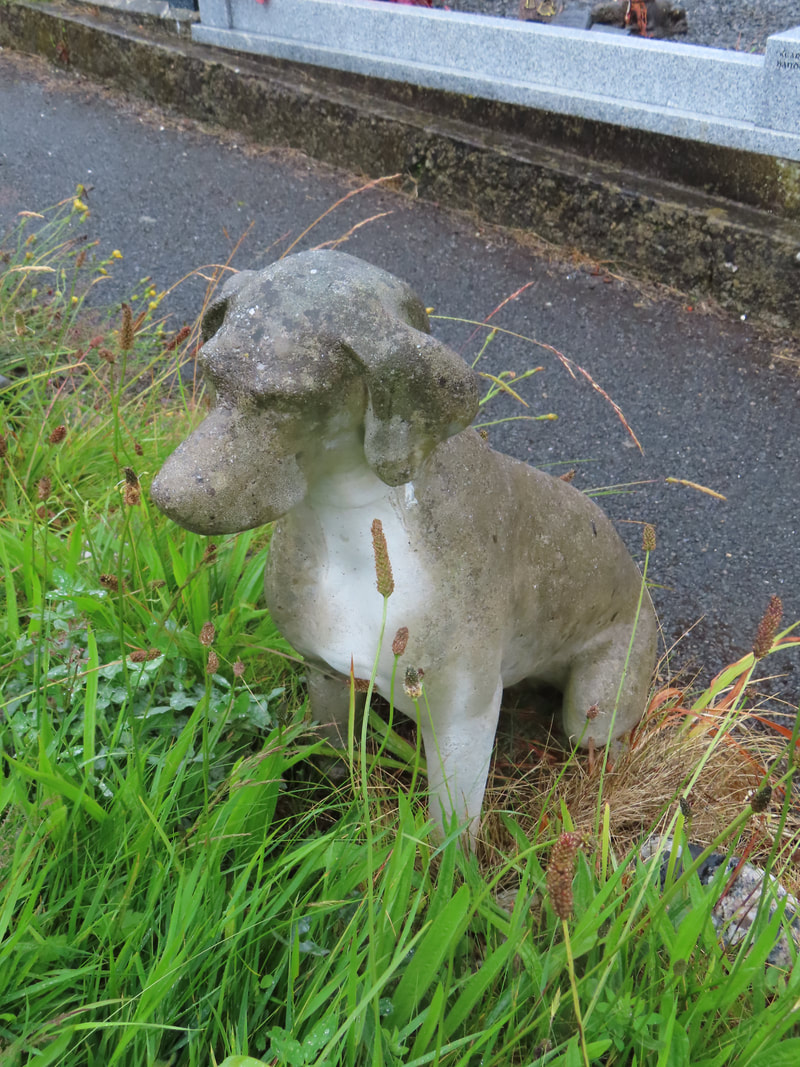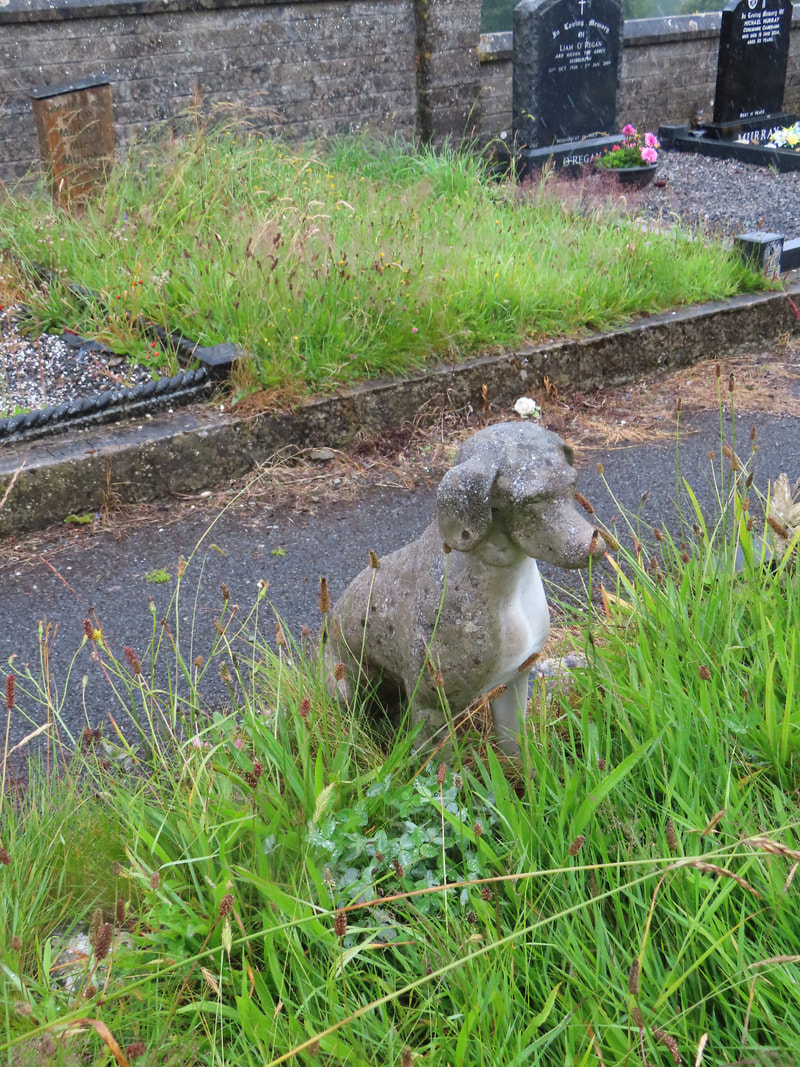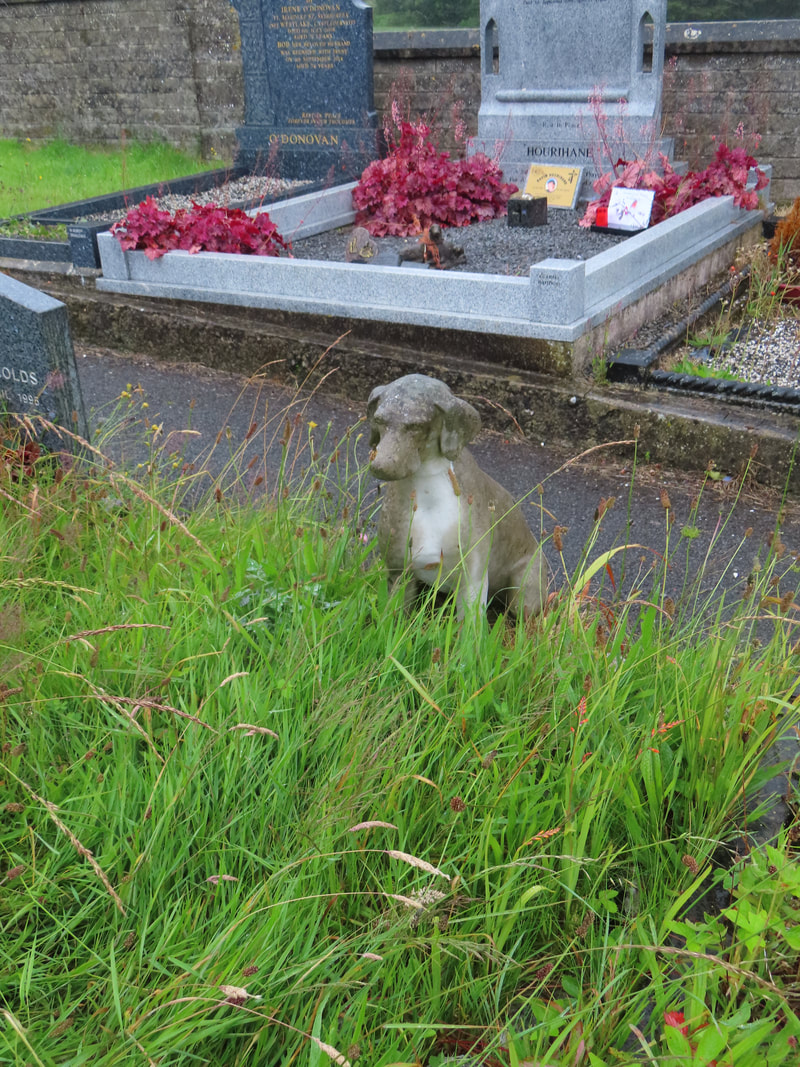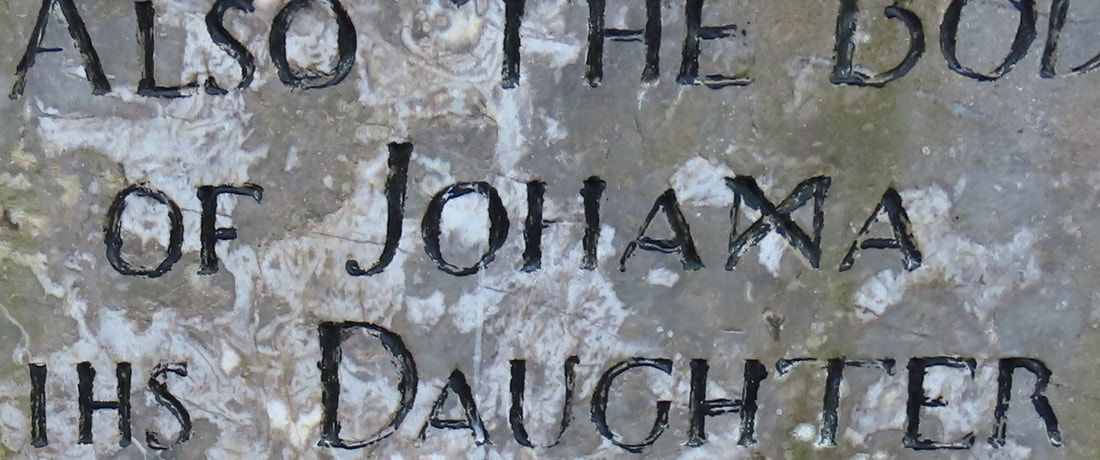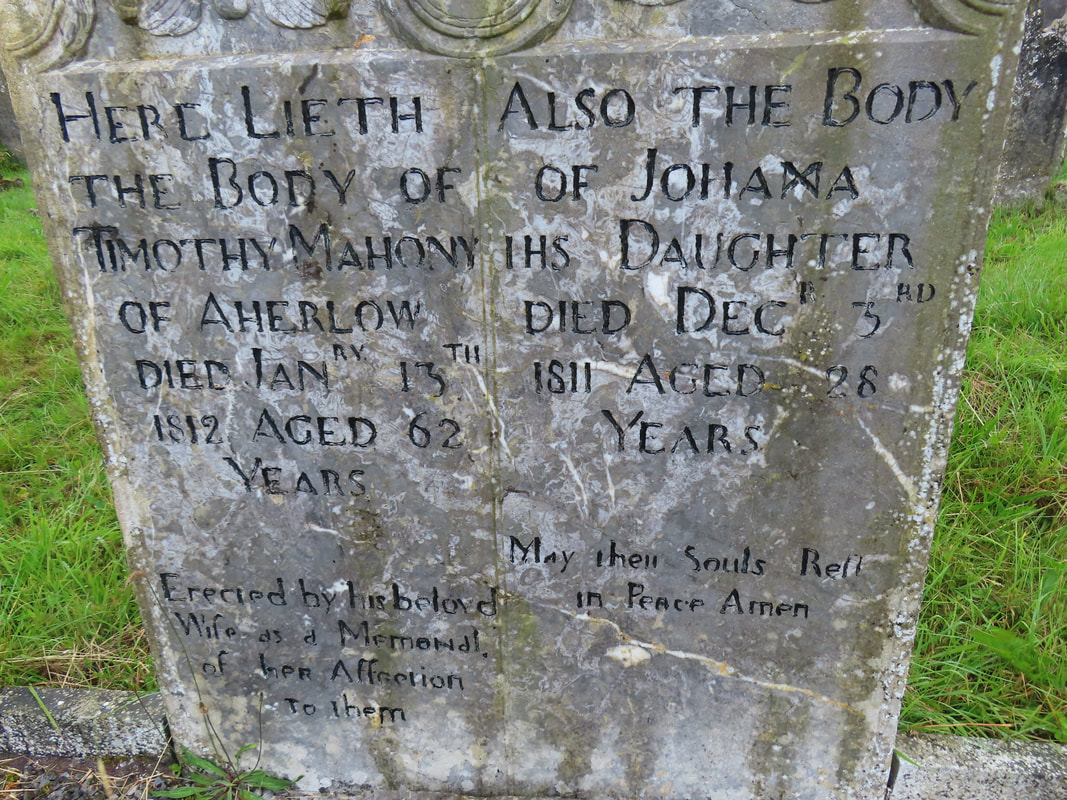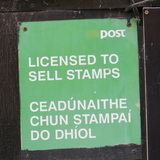| Last August, I was on a road not-before travelled, the best type of road to feed the O.C.D. of sign-spotting, memorial-spotting, and finding things new. I turned off the N70 Ring of Kerry. I had passed Dooks Golf Club and was on my way towards Cromane when I spotted this sign. My initial thoughts were as to the odds of the person returning the troughs having read the sign; and, whether spending money on the printing of the corriboard sign was a good investment. These photos remained foldered away on my drive for thoughts and rambles that may turn into a blog at some stage. On Saturday, I was chatting with Colm whose fishing routine has been interrupted in recent years by the theft overnight of outboard engines – such engines seemingly departing the country. This has had the consequence of less boatmen in the market to cater for the needs of fishermen. Then later that day, I spotted the tweet from @CorkCoast with the hand written sign requesting return of stolen garden roller. These were enough relocate those photos from last August into the blogged folder. | The spelling issue was not necessary to justify inclusion in this blog – but it definitely helped…. As I drove off, another thought was whether ‘Cattle Nut Troughs’ or ‘Cattle Nuts Trough’ was the more appropriate. Google did not think either appropriate: Cattle Feed Trough being their preferred description. |
|
0 Comments
It appears that the sticker has replaced marker graffiti.
Marker graffiti was definitely much more prevalent when I was younger – a time when a smile would be brought by the message that Bill Posters Is Innocent. The sticker as a message form is a more recent phenomenon. It is so prevalent now that a pole or utility box without a sticker is a rarity. Most people probably ignore these stickers – me, I photograph many. Sharing them on twitter is a good a plan as any for 2024. There can be beauty in ironmongery; a carving in wood; or, even flaking of paint. It was many years ago when we visited Casa Battló in Barcelona. As part of the tour, we were told that Gaudi had spent a significant amount of time in the design of the door handle, to best be accommodated in the profile of the hand. It was so tactile. Last Summer, we were in the photograph gallery in Castlegregory village. There was a lovely image of the handle and lock. The post office green was a bit of a giveaway. The image – I think by Bernard Fitzpatrick – has been the prompt to catalogue the very many door details among the building features that I have photographed. I am not sure if I will be able to maintain for 365 days but today, the hashtag #A_Door_A_Day has been born The type of thing that is to follow
Charlie Kerins remains the last I.R.A. member to be condemned to death by the state and executed. That was on 1st December, 1944. A plaque to commemorate Charlie Kerins was erected at Easter 1947 and removed in May 1947 and was subsequently replaced. Memorials that have been damaged, removed or vandalised have been an interest of mine for some years. When doing the Local History course, I cited page 105 of Clodagh Tait’s book in more than two or three essays – ‘Tait suggests that the propaganda effect of some memorials and statues could not be overcome, except by their removal.’ Queen Victoria’s statue at the Aula Maxima in U.C.C. was removed and replaced with one of St. Finbarr. It was buried for over 60 years before going back on display. Streetsigns bearing the name Victoria were painted over in recent years. The statue of Victoria that stood at Dáil Éireann was removed and spent a long time in storage before being sent to Australia. Victoria’s was not the only memorial to be removed from the lawn of Leinster House. A cenotaph was erected in 1923 and had two panels, one commemorating Arthur Griffith: the other commemorating Michael Collins. This temporary structure deteriorated for many years before being replaced at a different location at Leinster House. My own list of memorials damaged or removed has reached 65 and the categories of those commemorated varies widely.
Back to the wall of St Iberius’s Church at Broadway in Co. Wexford. A plaque to Fiona Sinnott was removed the night before its planned unveiling in 2008. A replacement plaque was subsequently also removed. The adhesive/render is all that remains.
A plaque was erected at Kilmore Quay in 2018.
“When Grange closed in the 1950s, a communal decision was taken to maintain the ancient ritual and a new sceach between Kilmore village and the new cemetery was blessed and commissioned to carry the crosses for funeral generations. Since then hundreds of funerals have stopped at the crossroads and paused for a moment so that grieving families and friends can leave a wooden cross there to honour the memory of their loved ones and to continue our of most scared customs.” “We may ask what connection is there between the crosses which Miss Stokes found near Cong, those she saw near the mouth of the Somme, and those to be still seen in the parish of Kilmore ? I don’t think I’ve seen that before I have seen qualifications and trades noted on headstones. I have seen names of companies where the deceased worked. I have seen record of involvement with sports and community organisations. These all were important enough in the life of the deceased to be cut into stone.
Baltimore Industrial School left its mark on John Griffin – so deep that it stays with him even in the grave. The ‘sea of barbarism’ was how John Griffin described the institution. The Irish Times quotes him in response to the Laffoy Commission report, "It's now there on the record for generations to take heed and realise what happened to us." The engraving on the headstone is a prompt towards that record. The Southern Star article after his dead has the headline ‘Storyteller John could put a smile on anyone's face’ – on a cold November afternoon at St Patrick’s Cemetery in Skibbereen, he did to me. This particular rabbit hole was inspired by Michael Harding’s book, Chest Pain. I spotted it on my first visit to the library post cardiac incident and it just had to come home. Towards the end, page 363 to be precise, there is a story about damage to a statue to the Blessed Virgin Mary that was not spotted by any of the parishioners, even after the bishop had thrown a ‘skite’ of water on it as a blessing.
“Words are in dictionaries because they exist – they do not exist because they are in dictionaries”
Was introduced to a new message on a gravestone last week while taking some pleasant time out at Loch Salach Cemetery in Clonee. Fish Got To Swim….. Birds Got To Fly…….. A variation on ‘A man’s gotta do what a man’s gotta do…..’ 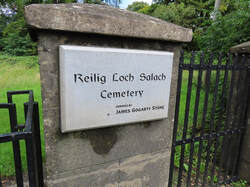 I was intrigued as to Loch Salach which did look like it derived from Dirty Lake but logainm.ie does not appear to mention dirty about the Clonee Lough Salach. The Donegal Loughsallagh does have reference to dirty: as does Loughsallaghclogher in Co Galway – dirty lake of the stoney place. Clonee and the Kerry variety appear to have been cleaned up in the logainm records. With apologies to Ballyheigue which I called BlennervilleIt was a very low spring tide that revealed the remnants of scallop or mussel farming in the past. No longer functional, they are submerged and hidden for the majority of the time. |
| It was only recently that I discovered the difference between a headstone and a gravestone – a headstone being at foot of grave and gravestone being at head of grave. Walking Kilshannig Cemetery, I got to wondering as to what commemorative stones for those who have been cremated are called, or will be called. Ten years ago, in Derrynane, was when I first realised that stone memorials were erected to those who have been cremated. Somewhat reminiscent of cillín burials, the memorials were just outside the cemetery with a lovely view over the bay. A few years back, I noted, with a smile, the memorial to Josephine Deane built into the boundary wall of the cemetery. This week, a return visit brought me to a new stone inserted into the wall remembering Pat Crowley / Pádraig Ó Crualaoch. I have mentally filed these as commemorative stones, until told otherwise…….. |
| I noticed this sticker on a pole on the Dingle peninsula while the younger generation were pier-jumping. I had not seen this sticker before. I cannot recall having seen that message. I had not a recollection of hearing of the life, death or inquest of Eden Heaslip, who took his own life in September 2021, two weeks after his 18th birthday. When I spotted a similar sticker on a car in a church car park a few weeks back, that was enough reason for this blog post. |
| Maybe it was a memory of the story of Greyfriars Bobby ……… Maybe I remembered the funeral, during pandemic restrictions, of Margo Magan in Co. Longford where the image of her dog following the hearse went viral, in a good way…. Maybe I liked and remembered the story told of the previous owner of the Lota Beg in Tivoli who was so thankful of his Irish wolfhound rescuing him from drowning that he had a statue of the dog placed over the entrance. I did look for the name of the person buried but could not find it. The name of the dog, likewise, evaded my detection. I did not rub the dog’s nose but did give it a friendly pat on the head – he brought a definite smile and helped me forget, for a little while, that my socks were wet through my shoes. |
My inclination would be to spell the name as JOHANNA. In 1811, maybe JOHANA was a variation in use. But JOHAXA just looks wrong.
Maybe that was her name.
Maybe it was a correction of a mirrored N – similar to Liscleary – but one would expect removal of the incorrect diagonal if that were the case.
If a correction was to be done, I would have expected IHS to have been transformed into HIS.
Author
From Cork.
Old enough to have more sense - theoretically at least.
Archives
May 2024
April 2024
March 2024
January 2024
December 2023
October 2023
August 2023
July 2023
June 2023
December 2022
November 2022
October 2022
September 2022
August 2022
July 2022
June 2022
March 2022
November 2021
June 2021
May 2021
January 2021
December 2020
July 2020
June 2020
May 2020
April 2020
March 2020
January 2020
December 2019
November 2019
September 2019
August 2019
July 2019
June 2019
May 2019
April 2019
March 2019
January 2019
November 2018
September 2018
August 2018
July 2018
June 2018
May 2018
April 2018
March 2018
February 2018
December 2017
November 2017
September 2017
August 2017
July 2017
May 2017
April 2017
March 2017
February 2017
January 2017
November 2016
October 2016
September 2016
August 2016
July 2016
June 2016
May 2016
April 2016
March 2016
February 2016
January 2016
December 2015
November 2015
October 2015
September 2015
August 2015
July 2015
June 2015
May 2015
April 2015
March 2015
February 2015
January 2015
December 2014
November 2014
October 2014
September 2014
August 2014
July 2014
June 2014
May 2014
April 2014
March 2014
February 2014
January 2014
December 2013
November 2013
October 2013
September 2013
August 2013
July 2013
June 2013
May 2013
April 2013
March 2013
February 2013
Categories
All
Accuracy
Arts
Books
Branding
Cavan
Cemeteries
Clare
Commemorate
Cork
Dated
Donegal
Dublin
Economy
England
Fermanagh
Gaeilge
Galway
Ghostsigns
Graffiti
Grammar
Help
Heritage
Holland
Humour
Kerry
Kildare
Laois
Leitrim
Limerick
London
Longford
Marketing
Mayo
Me
Meath
Northern Ireland
Offaly
Old Ads
Old Shops
Other Blogs
Plaque
Politics
Public
Punctuation
Religion
Riddle
Roscommon
Scotland
Sculpture
Sligo
Spelling
Sport
Stickers
Street Art
Submission
Tipperary
Tweets
Waterford
Westmeath
Wexford
Wild Atlantic Way
Blogs I Read & Links
Head Rambles
For the Fainthearted
Bock The Robber
Póló
Rogha Gabriel
Patrick Comerford
Sentence First
Felicity Hayes-McCoy
140 characters is usually enough
Johnny Fallon
Sunny Spells
That’s How The Light Gets In
See That
Tea and a Peach
Buildings & Things Past
Built Dublin
Come Here To Me
Holy Well
vox hiberionacum
Pilgrimage in Medieval Ireland
Liminal Entwinings
53degrees
Ciara Meehan
The Irish Aesthete
Líníocht
Ireland in History Day By Day
Archiseek
Buildings of Ireland
Irish War Memorials
ReYndr
Abandoned Ireland
The Standing Stone
Time Travel Ireland
Stair na hÉireann
Myles Dungan
Archaeouplands
Wide & Convenient Streets
The Irish Story
Enda O’Flaherty
Cork
Archive Magazine
Our City, Our Town
West Cork History
Cork’s War of Independence
Cork Historical Records
Rebel Cork’s Fighting Story
40 Shades of Life in Cork
Roaringwater Journal
